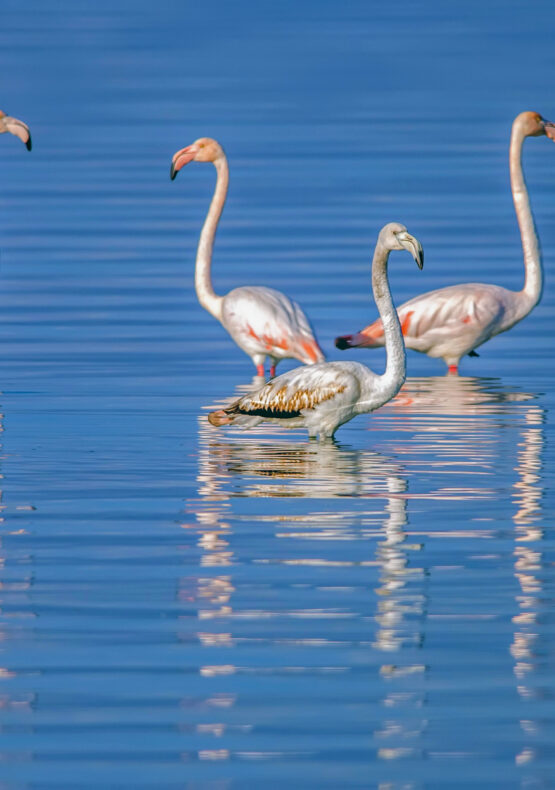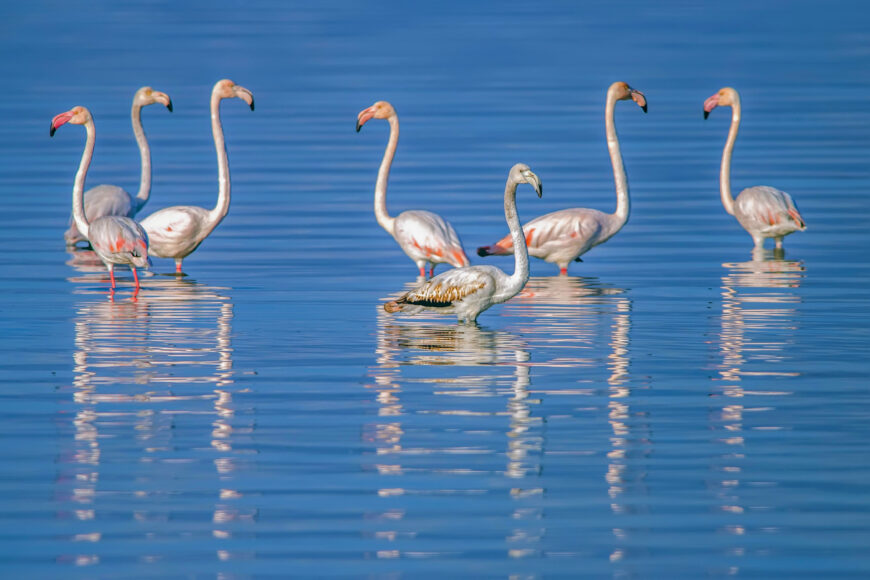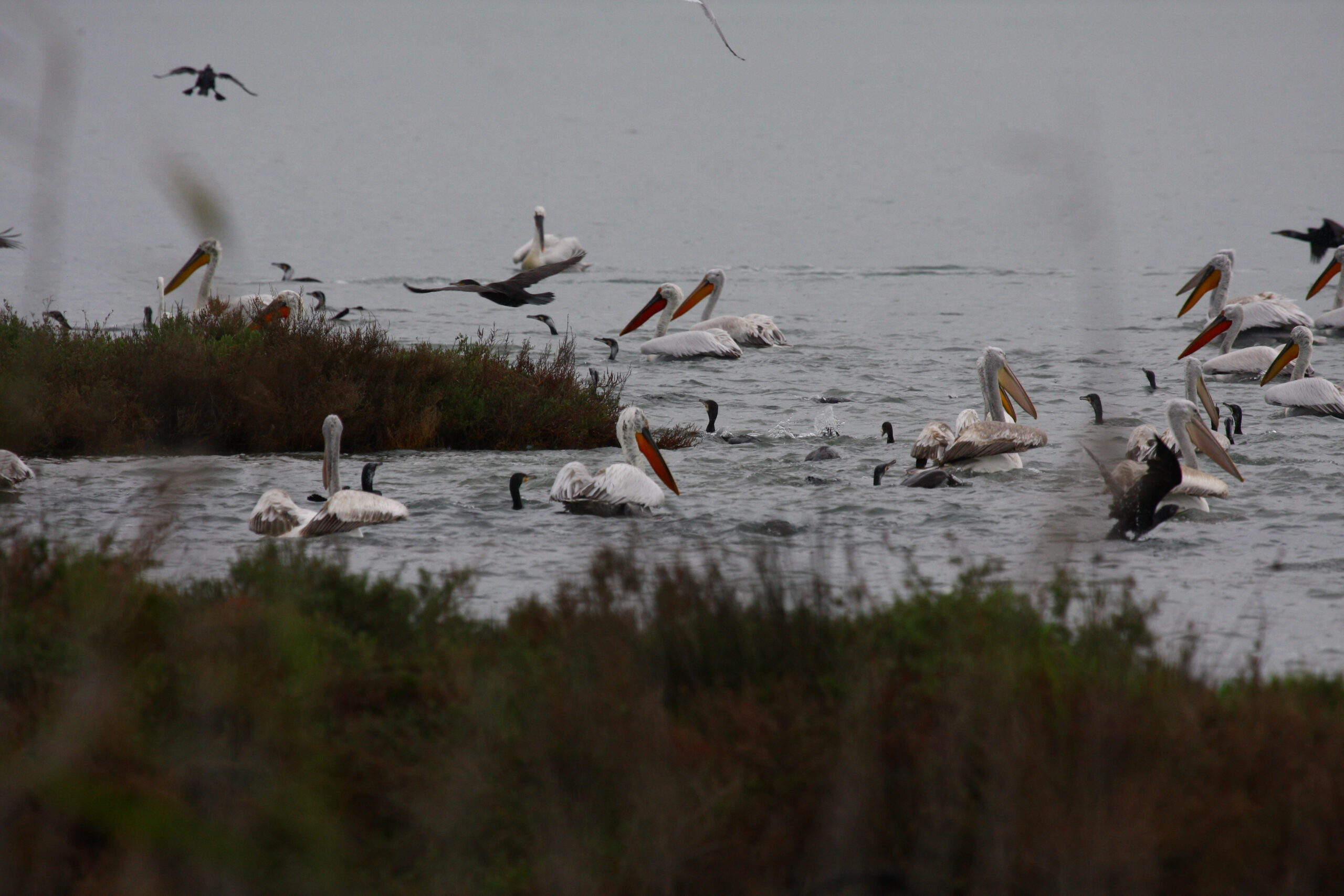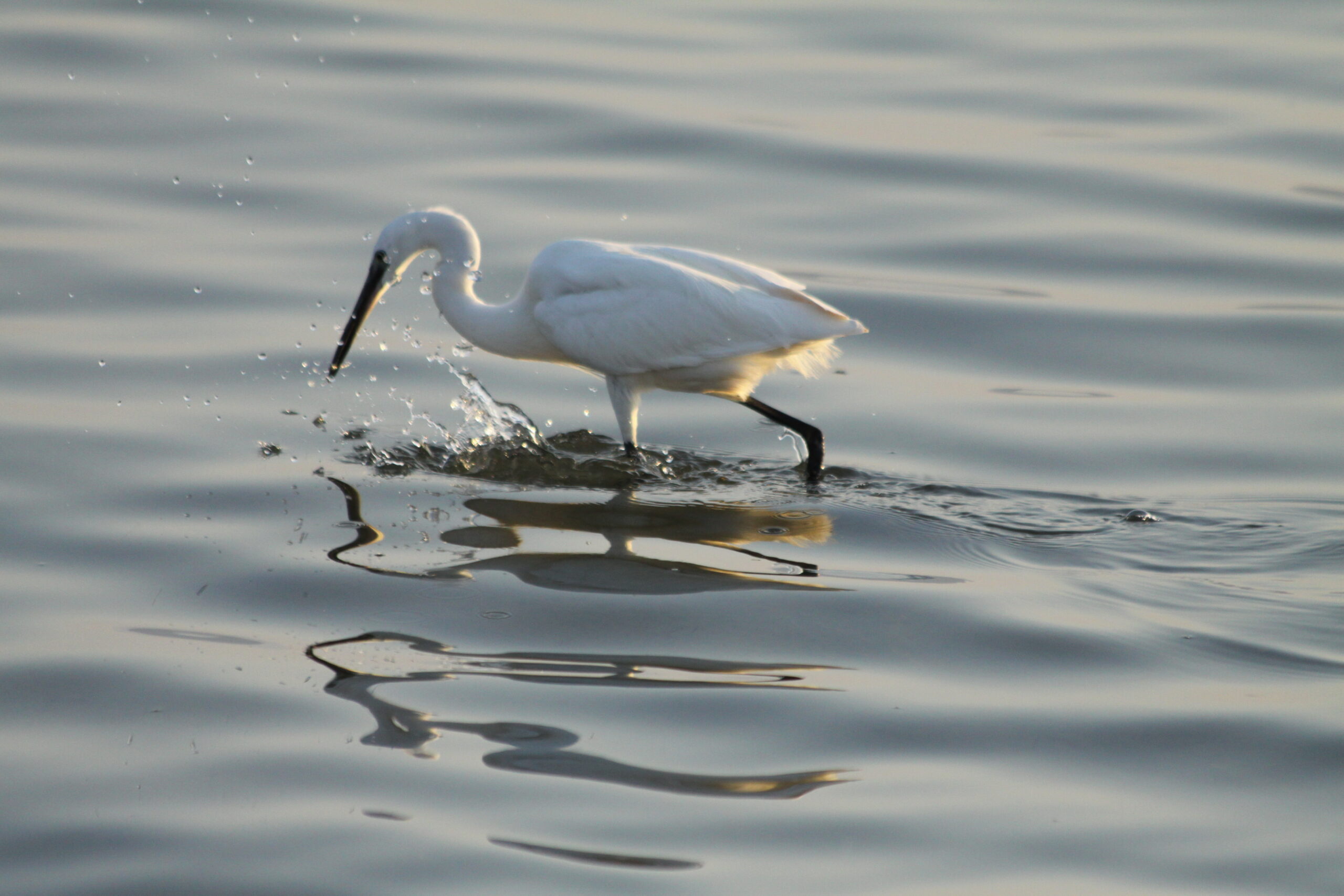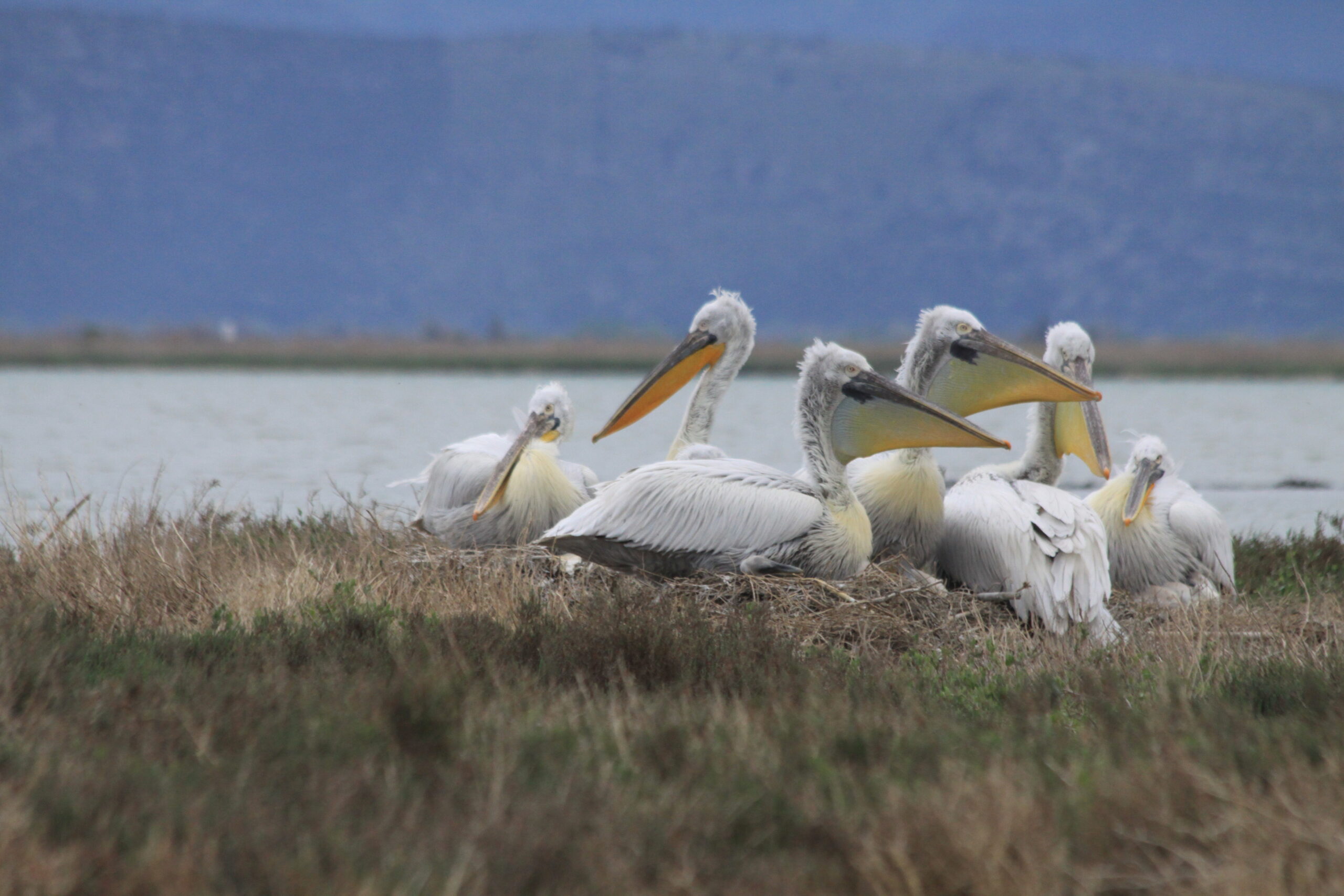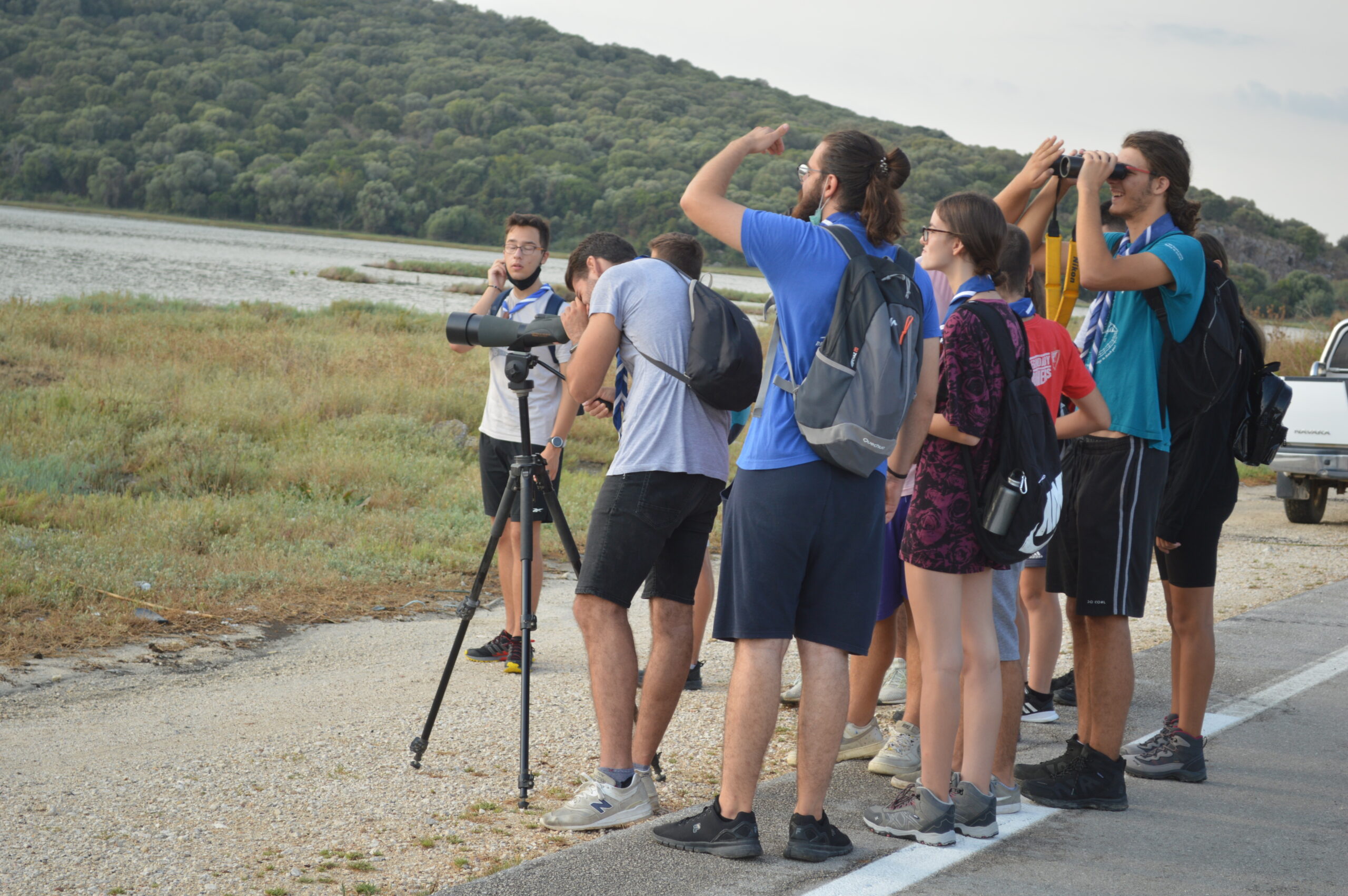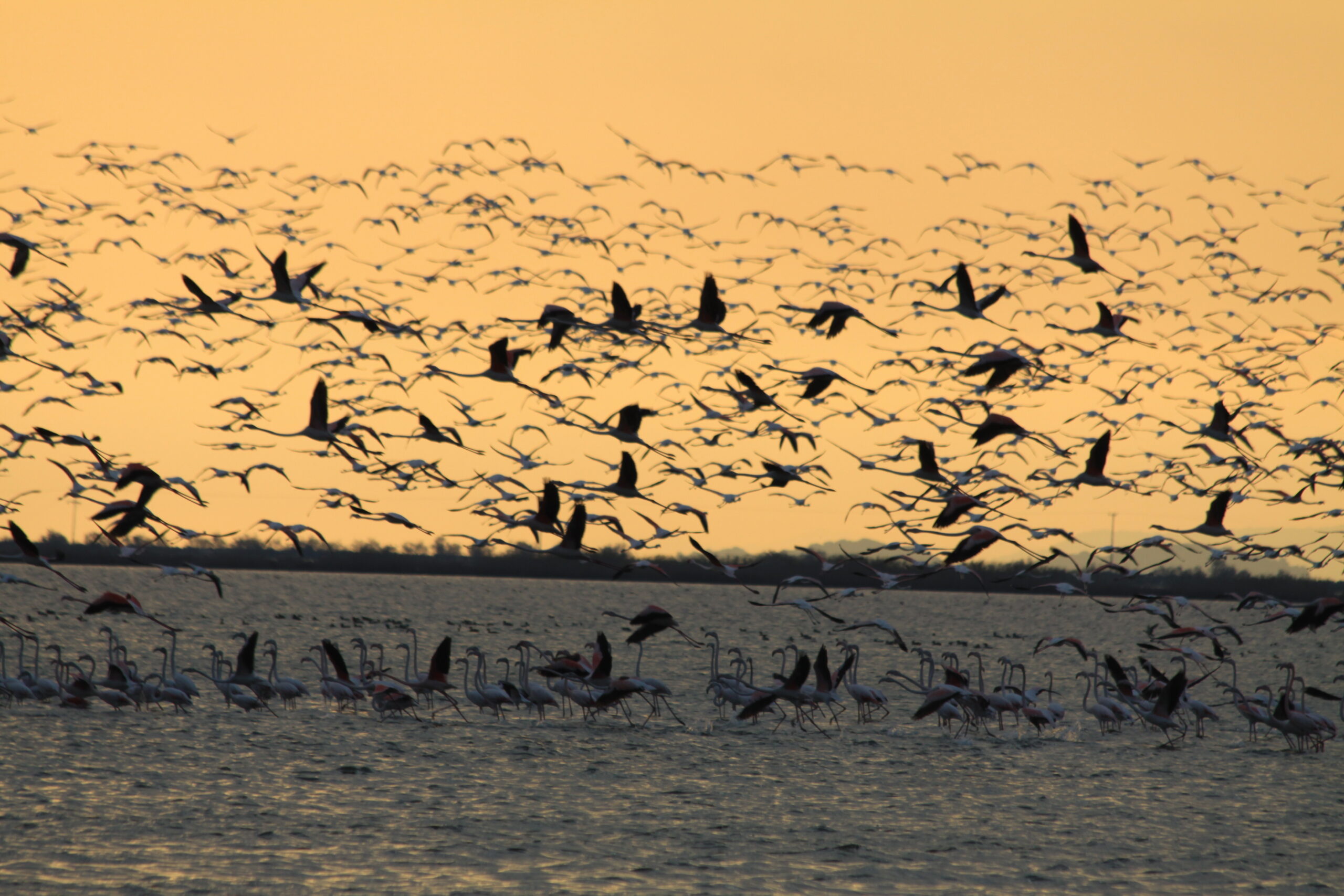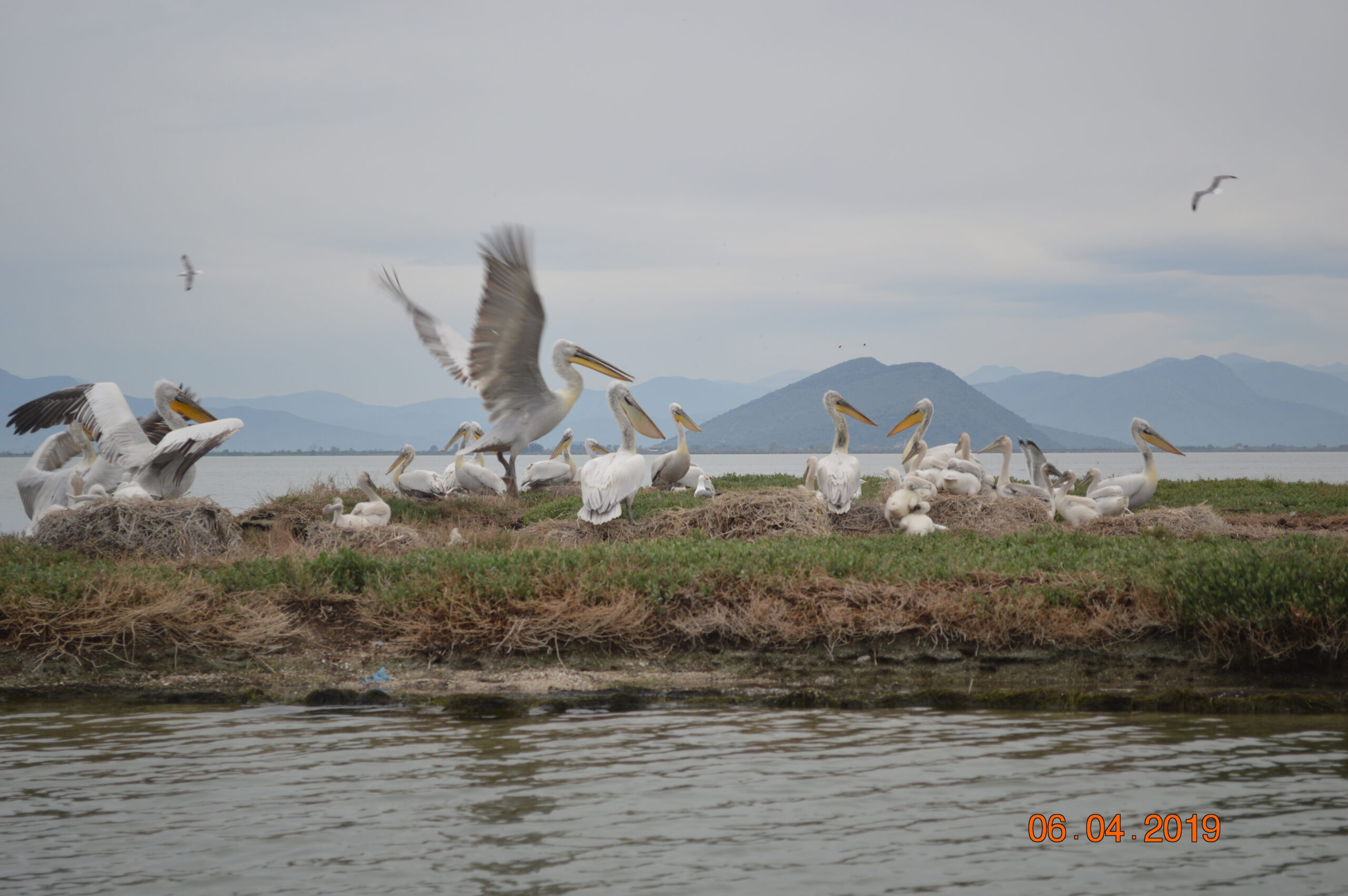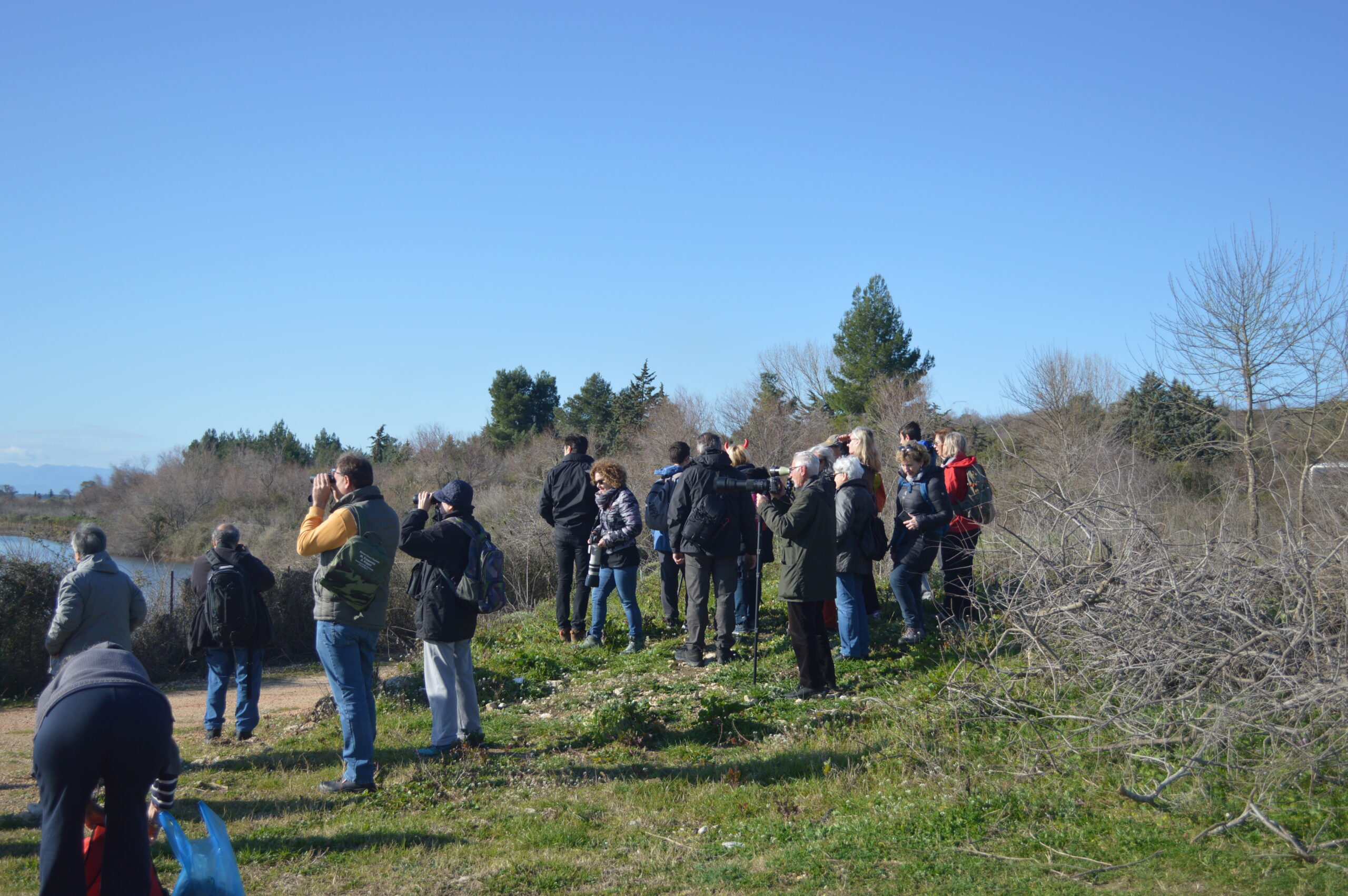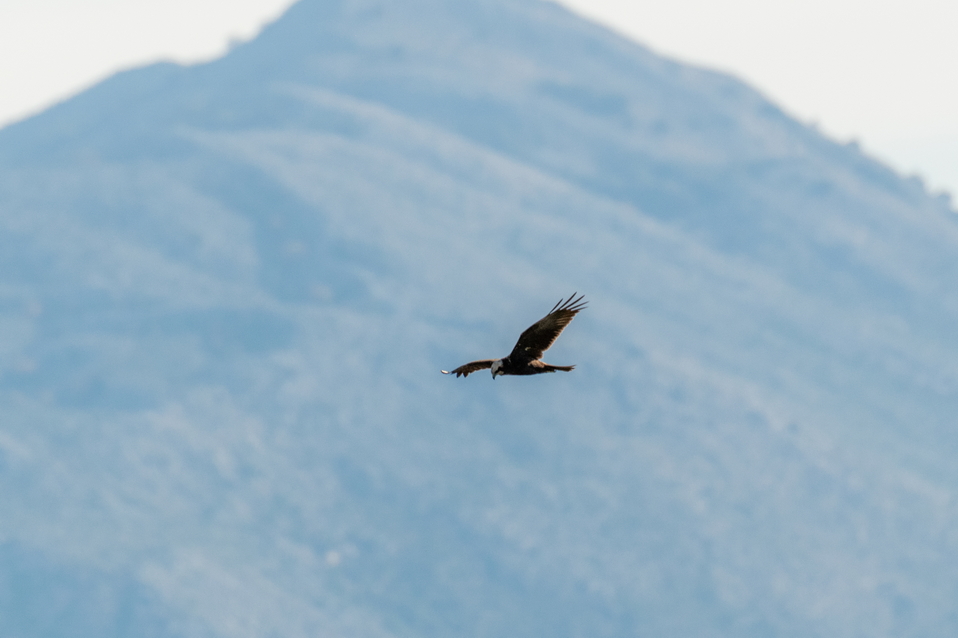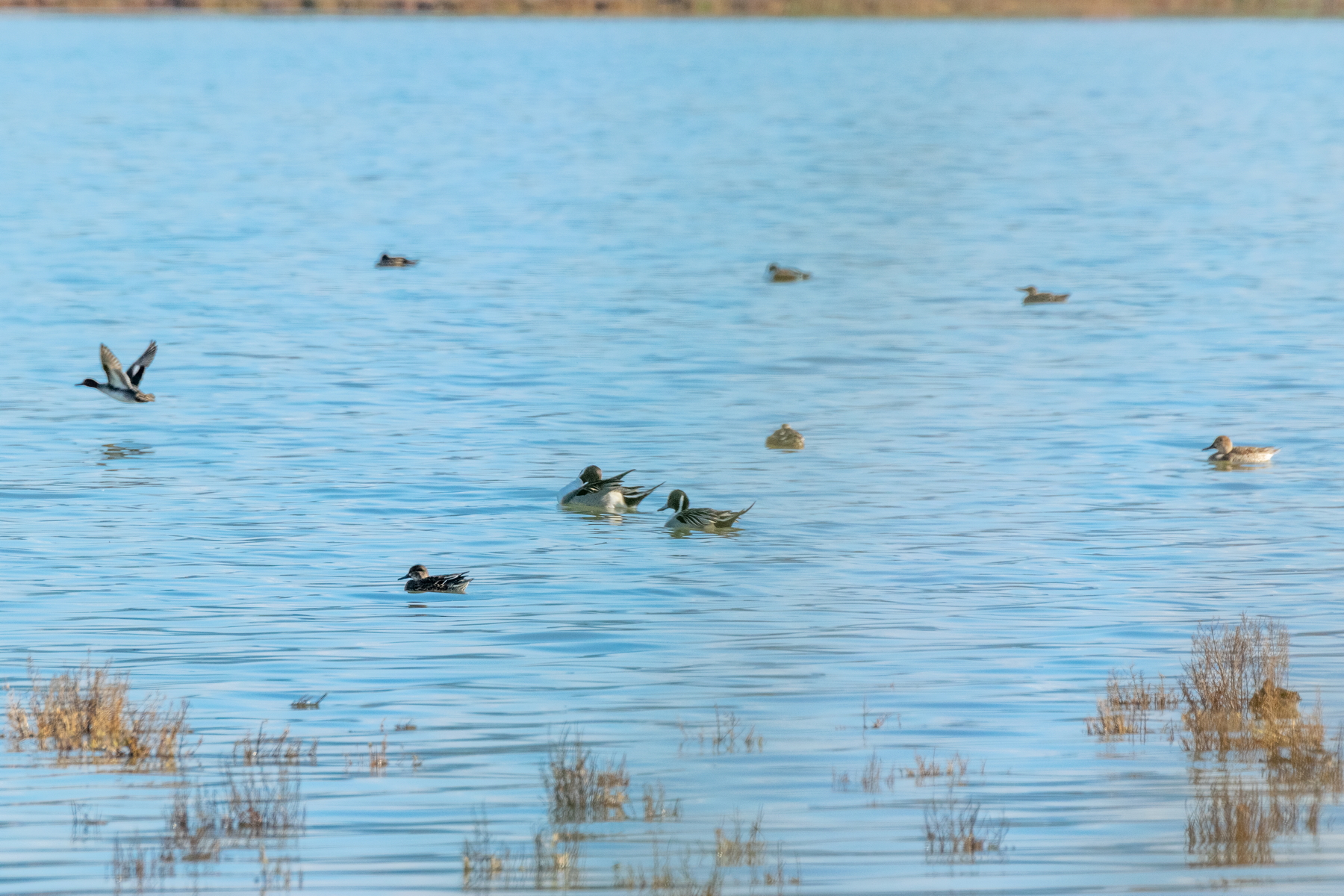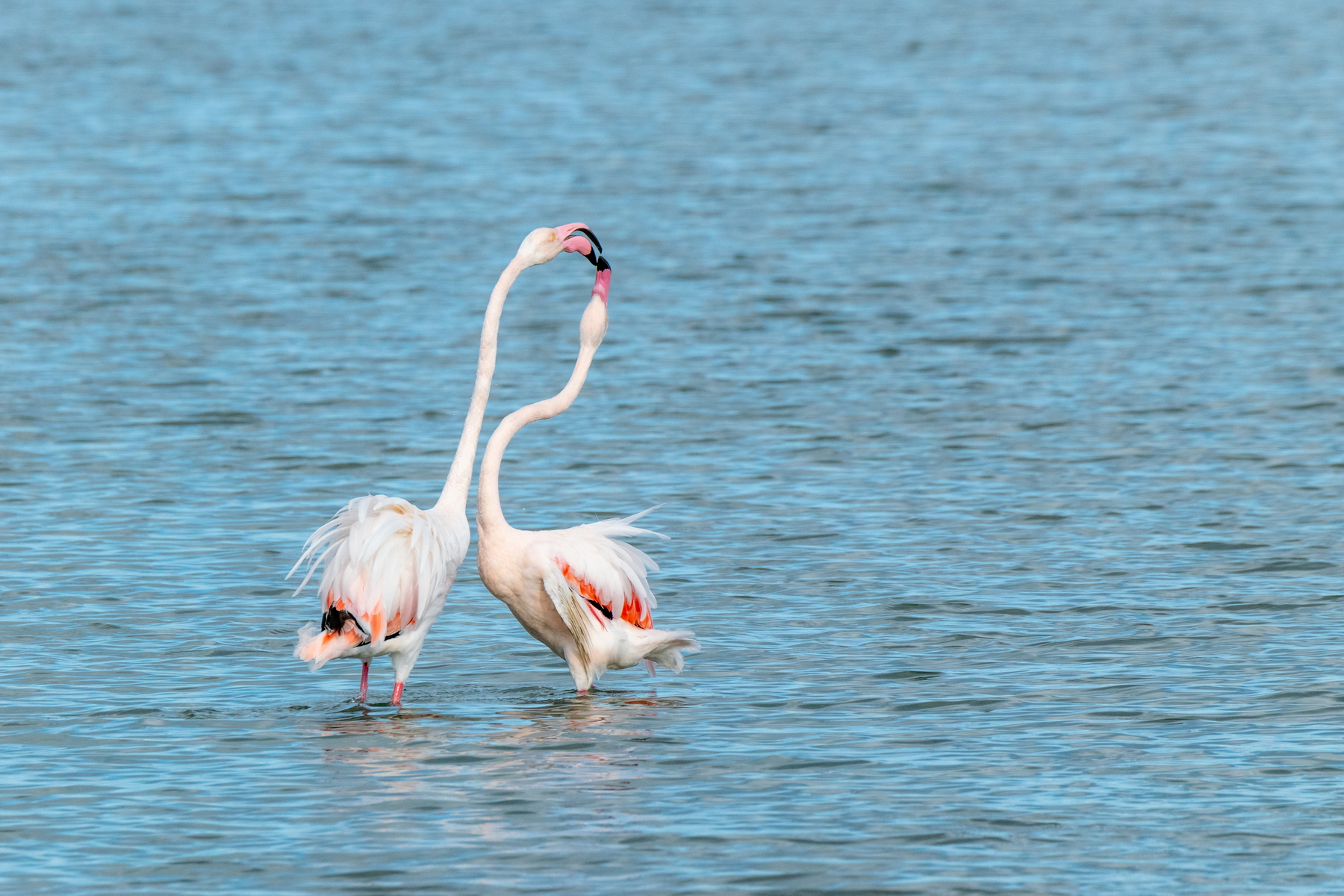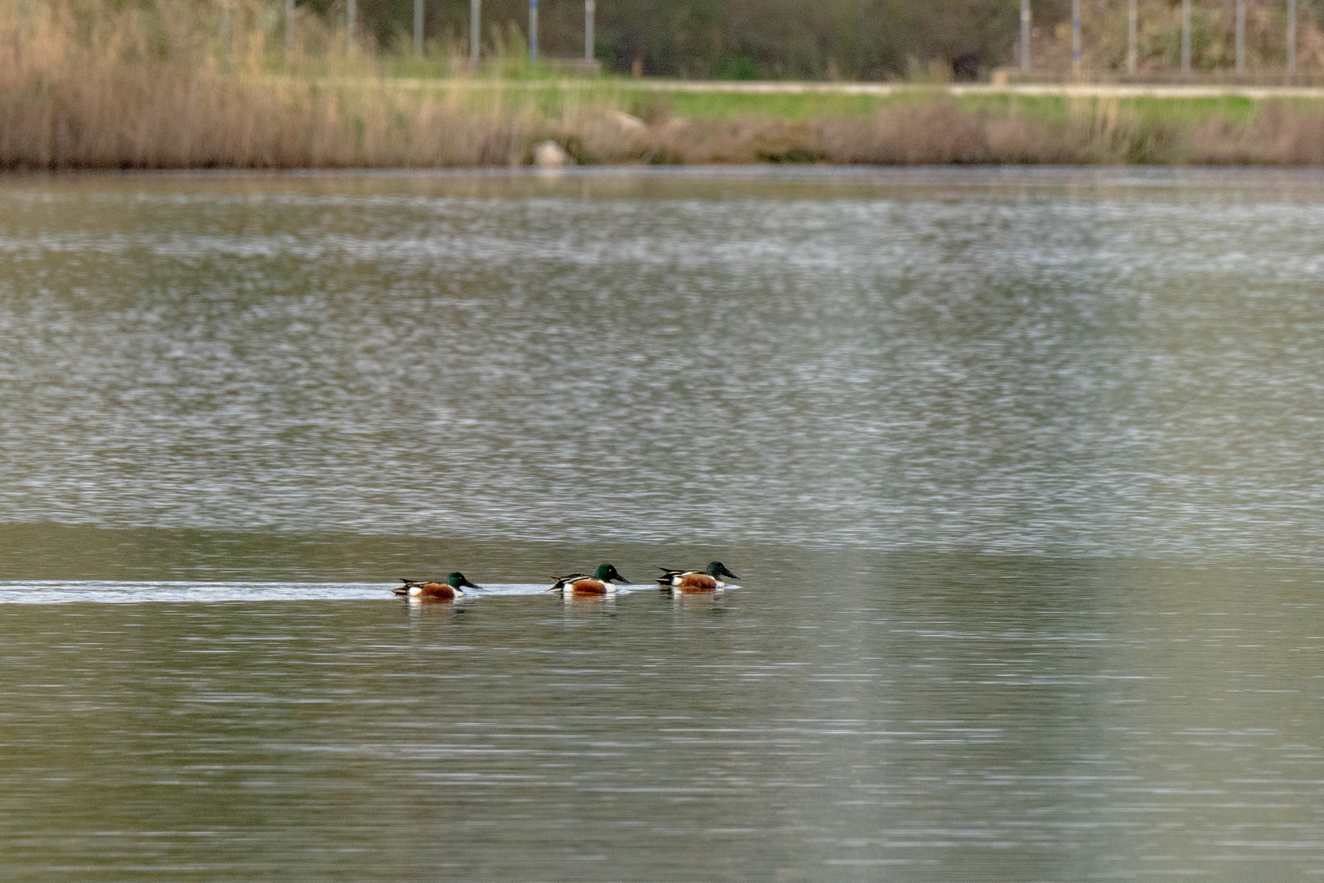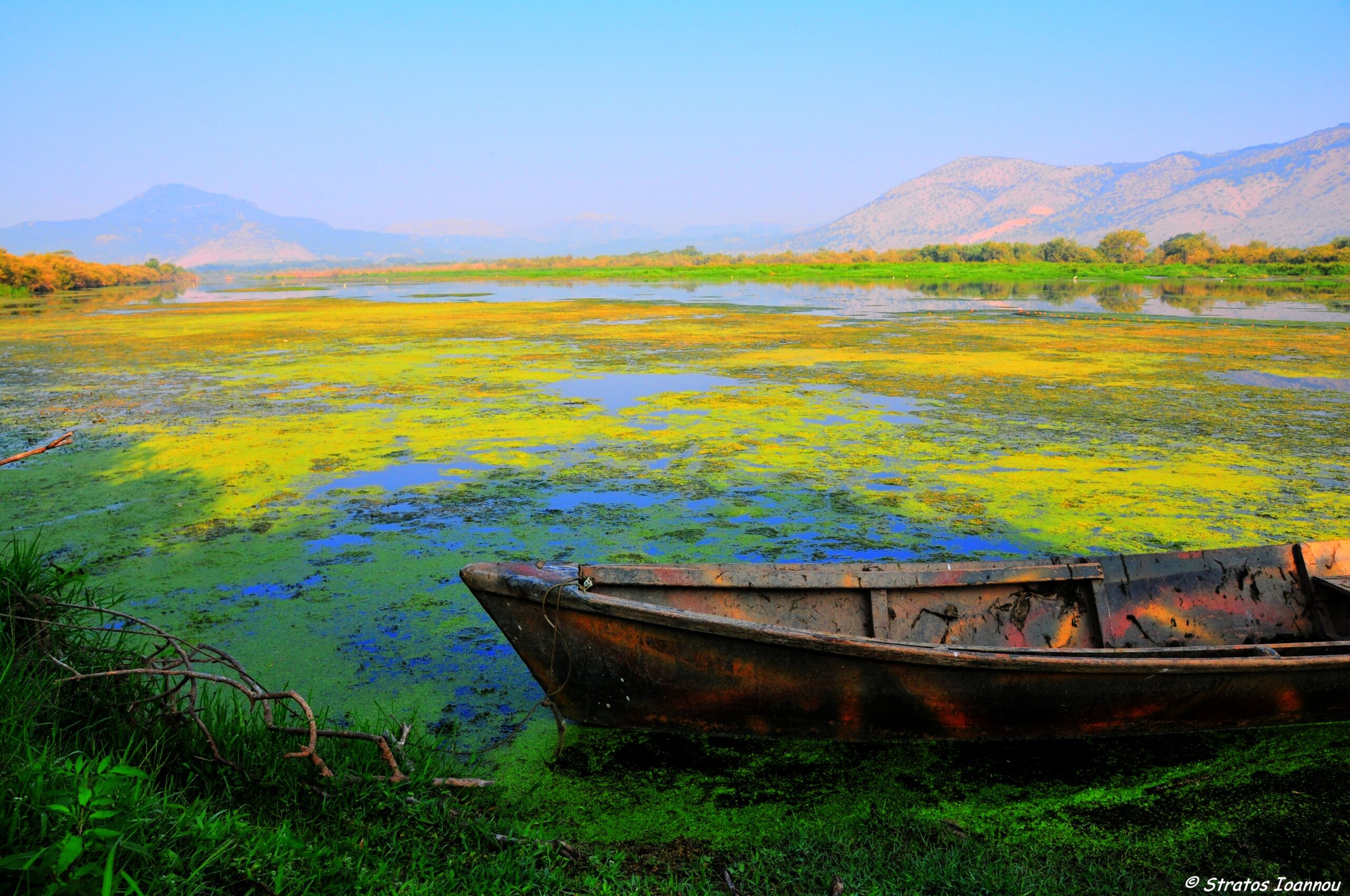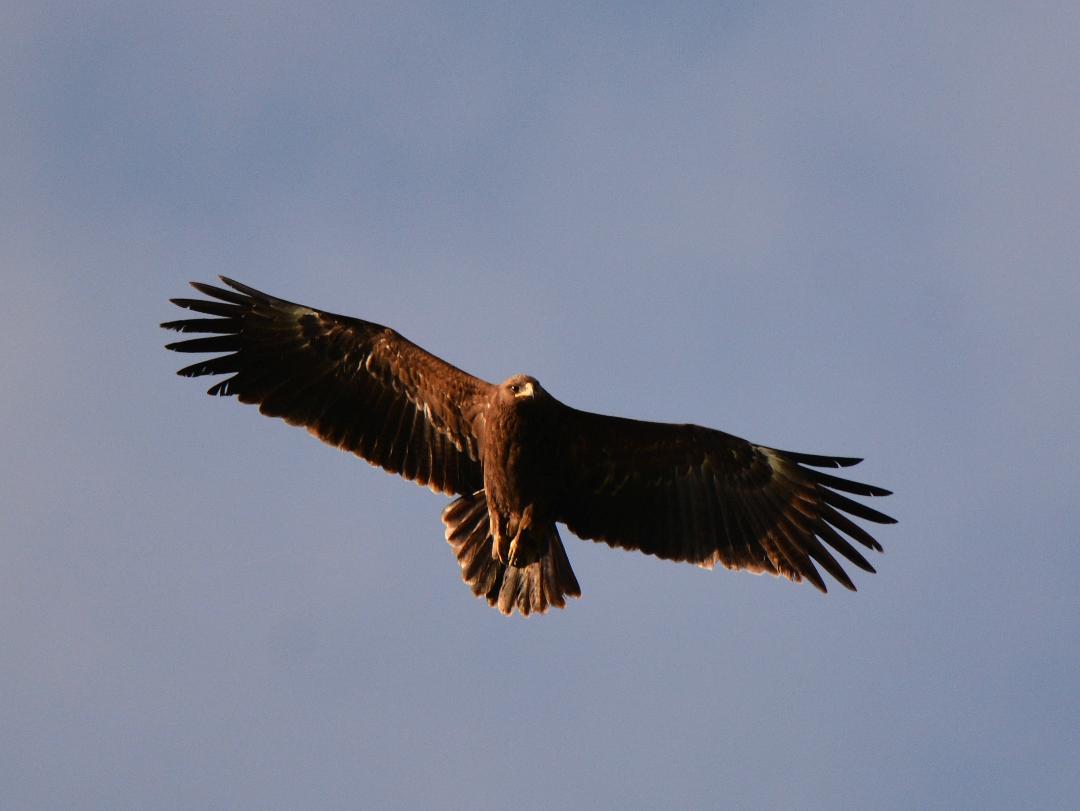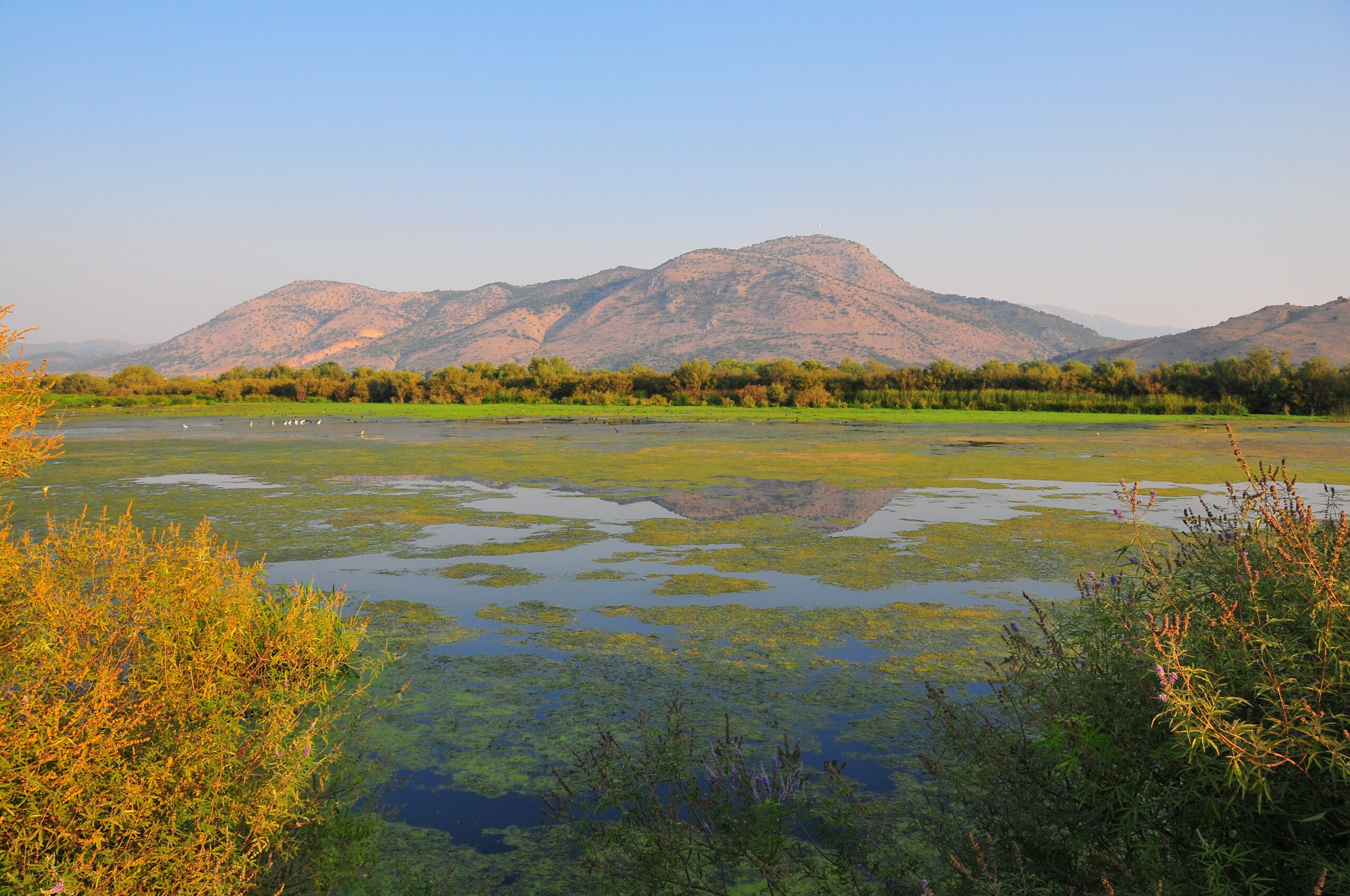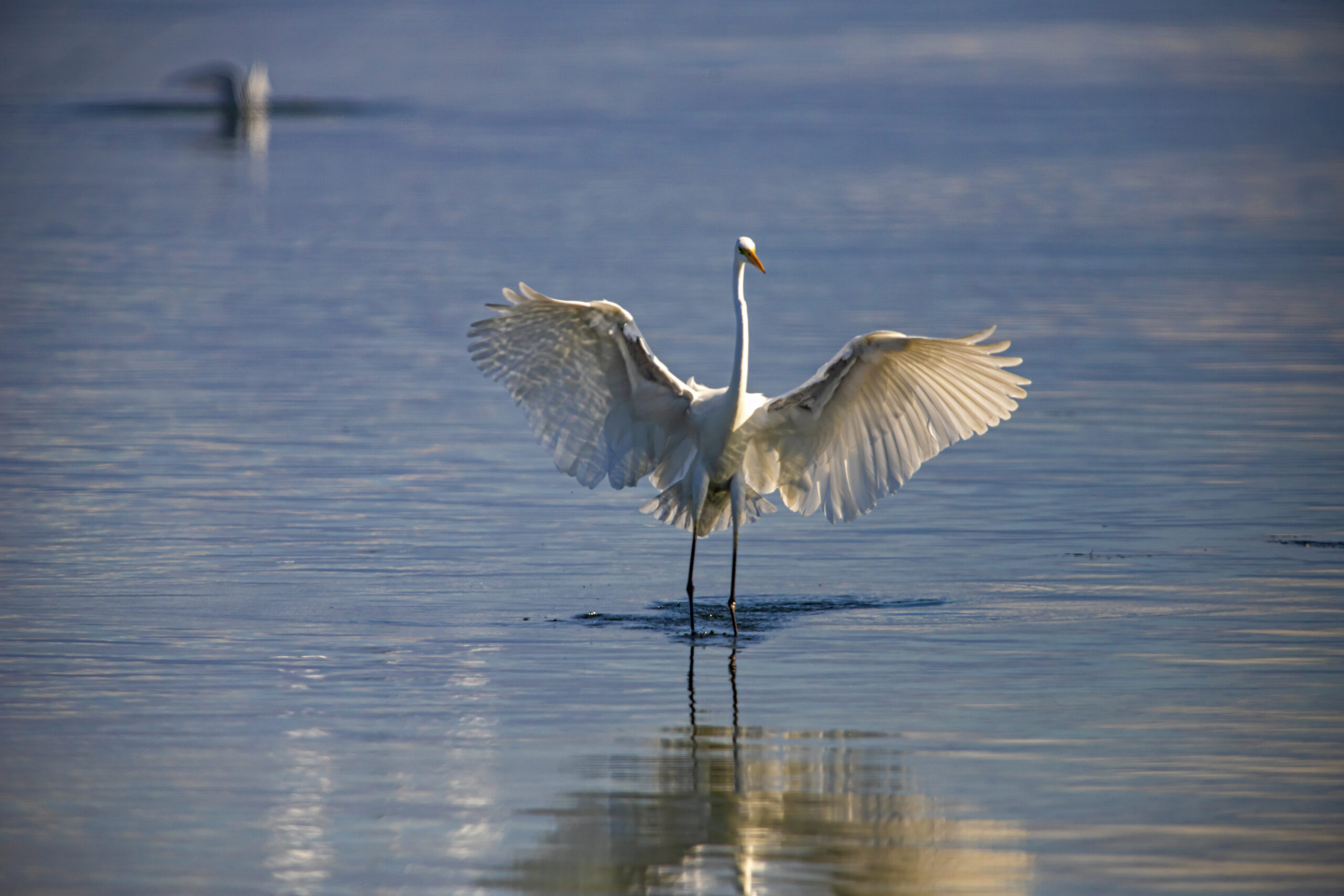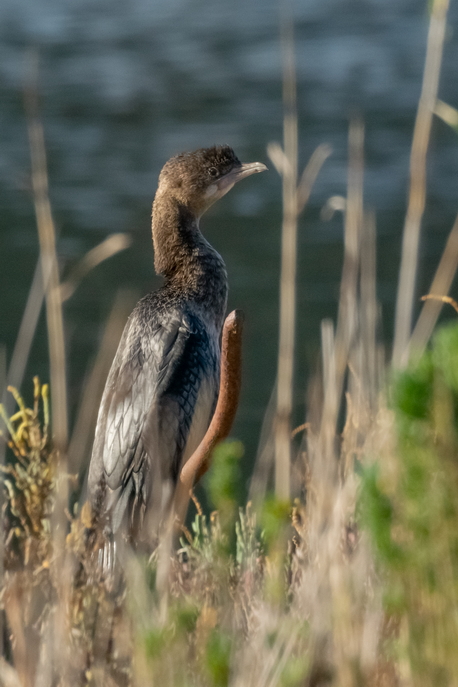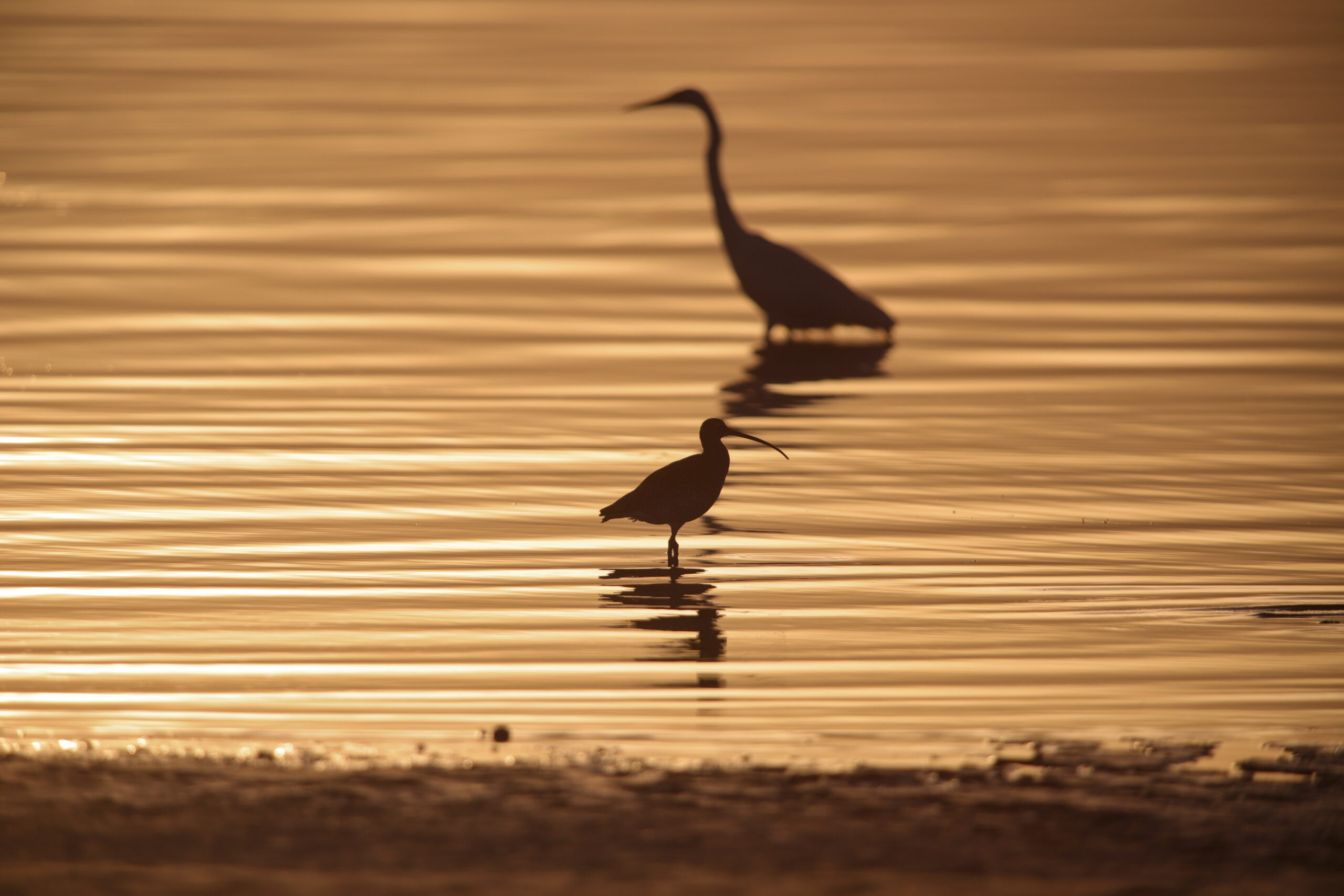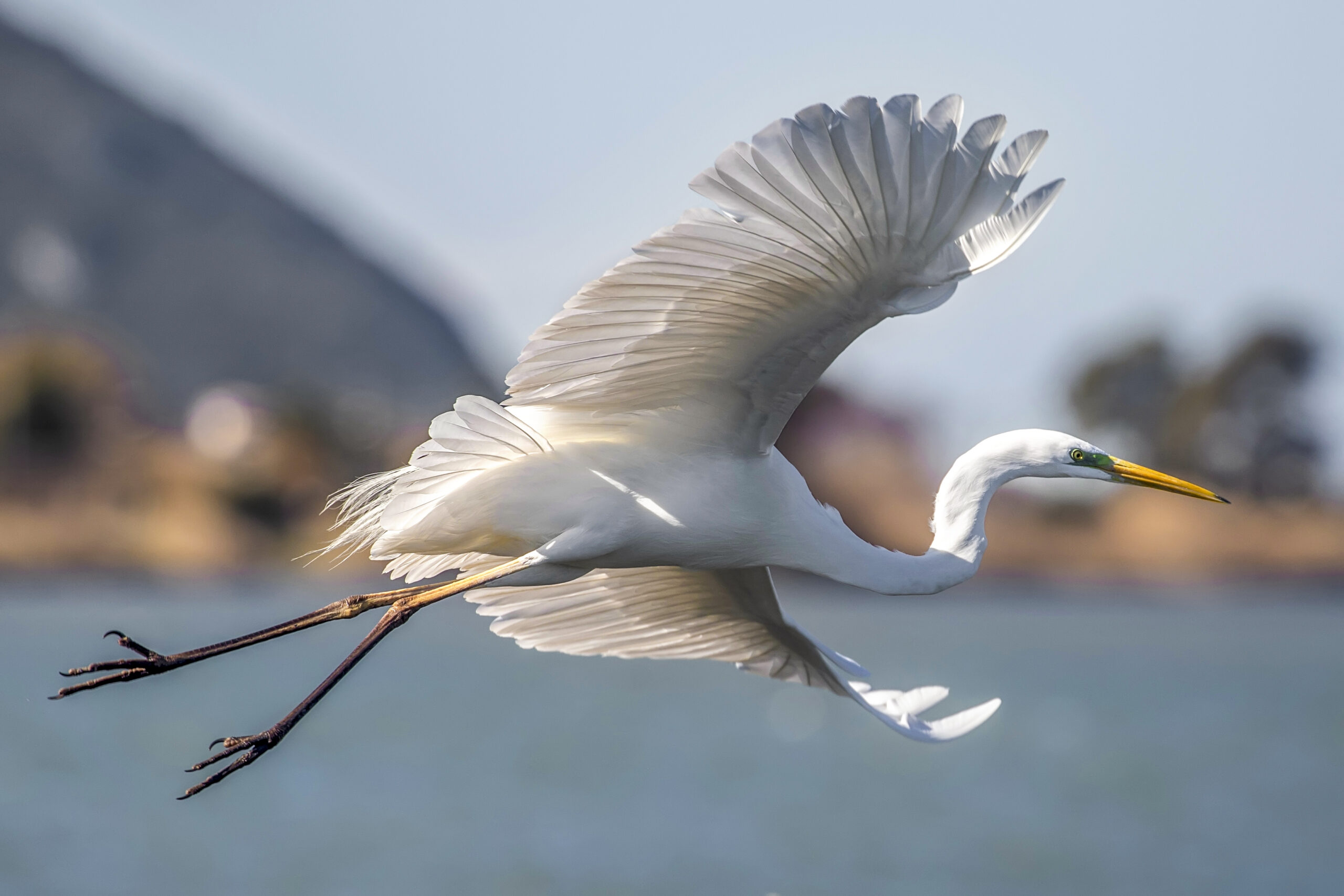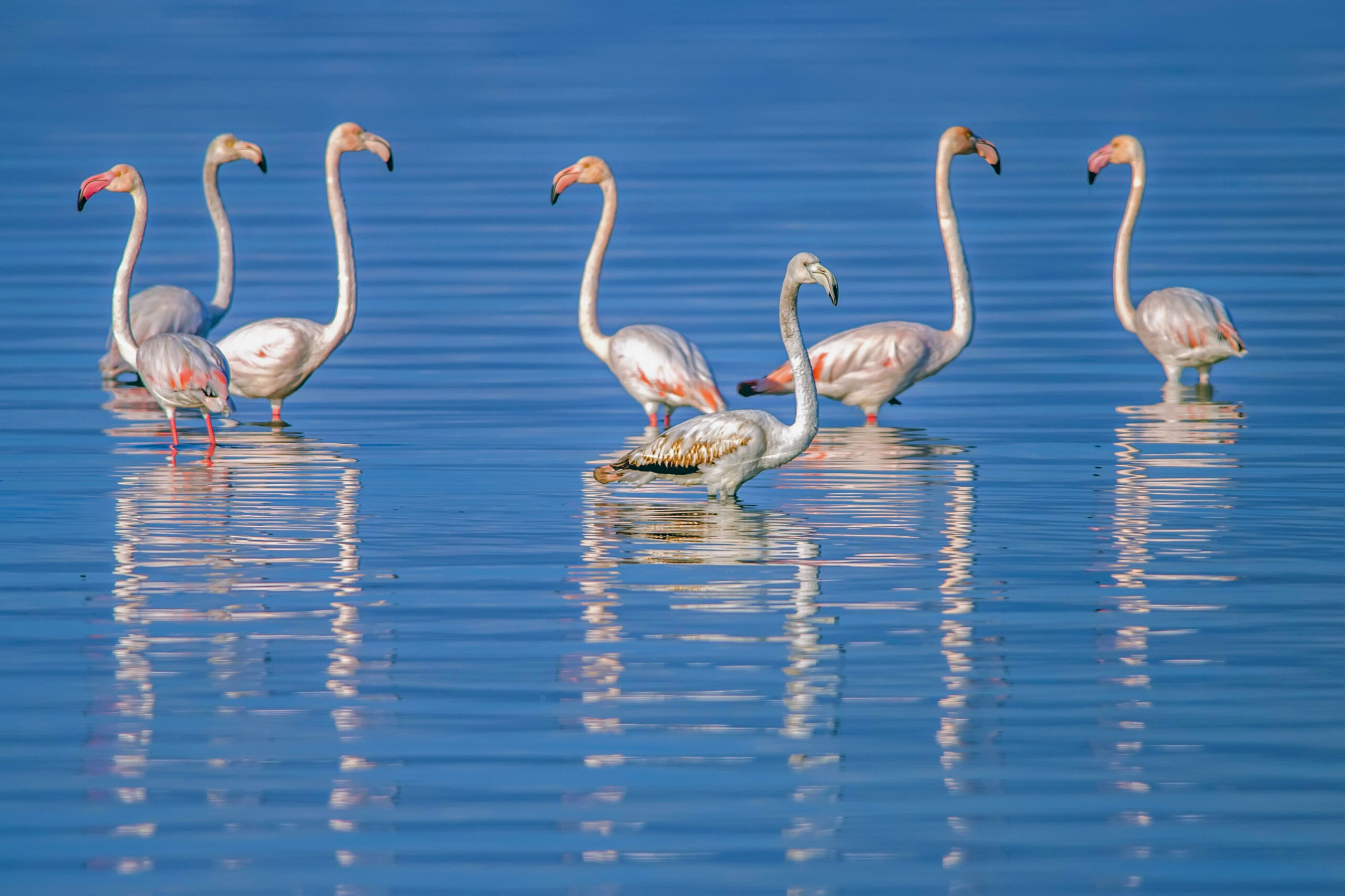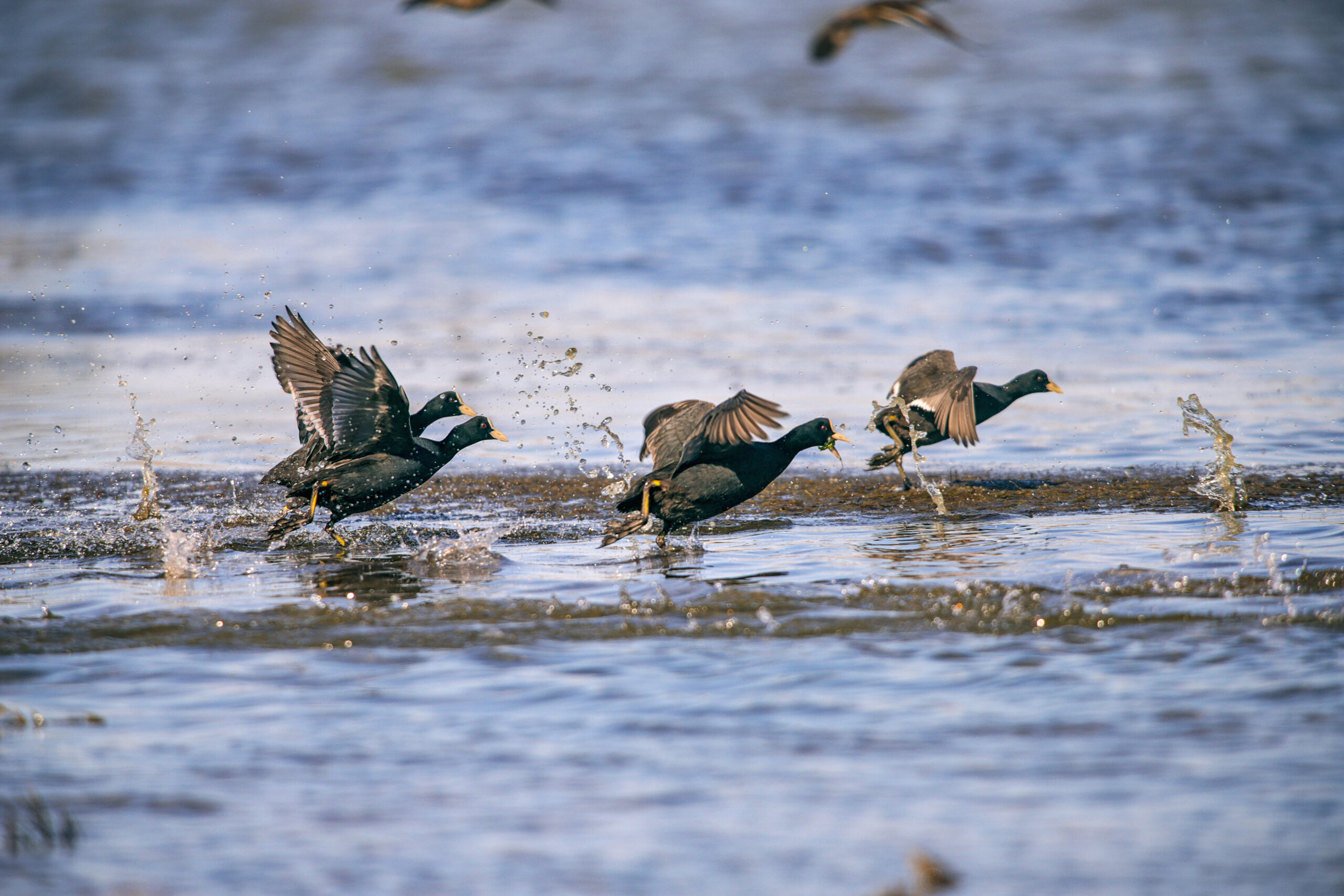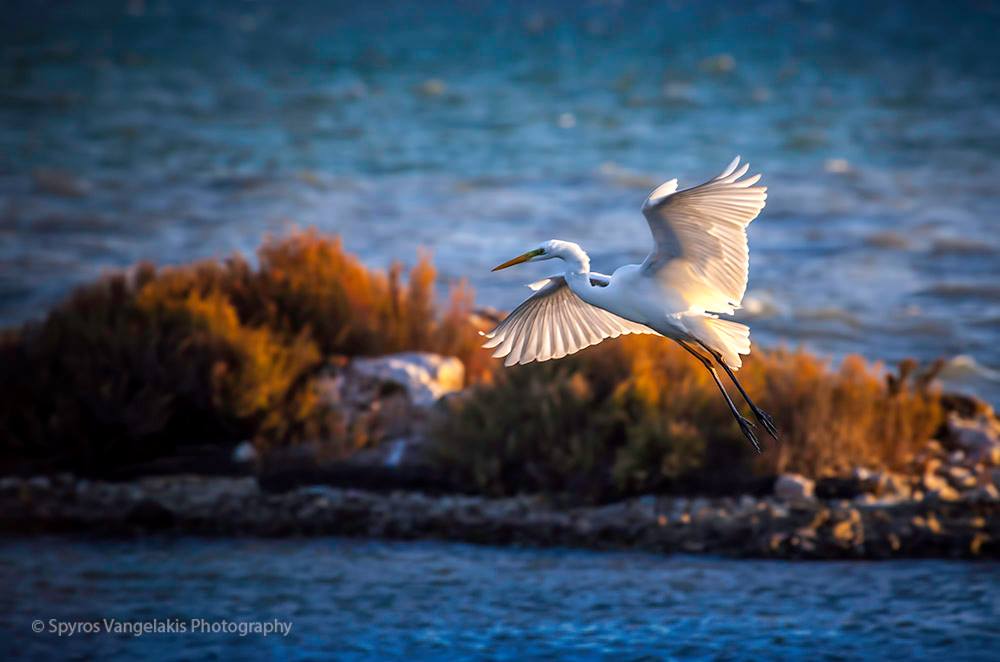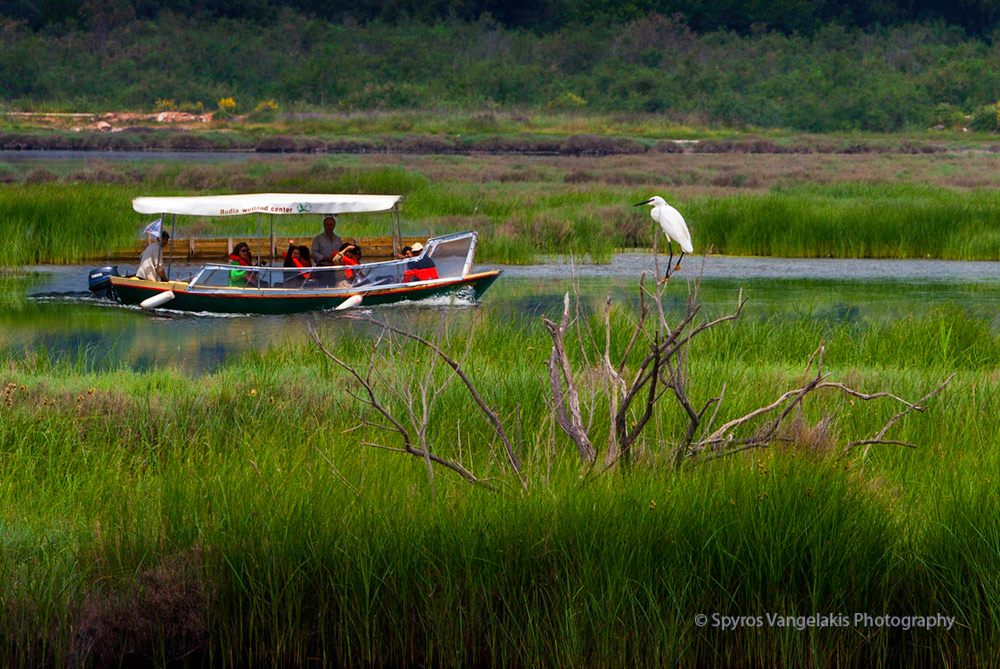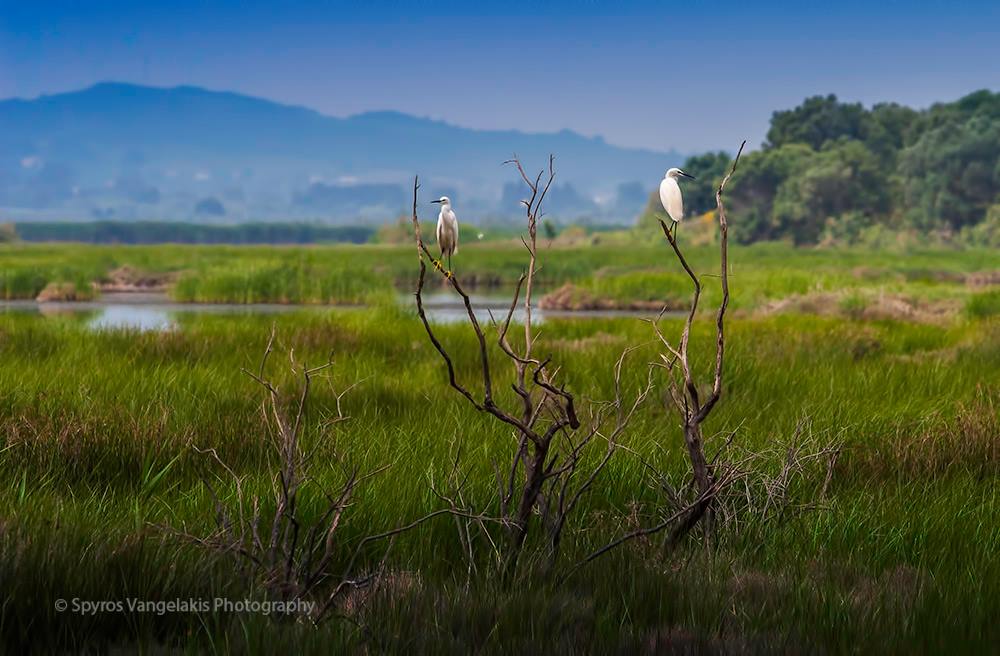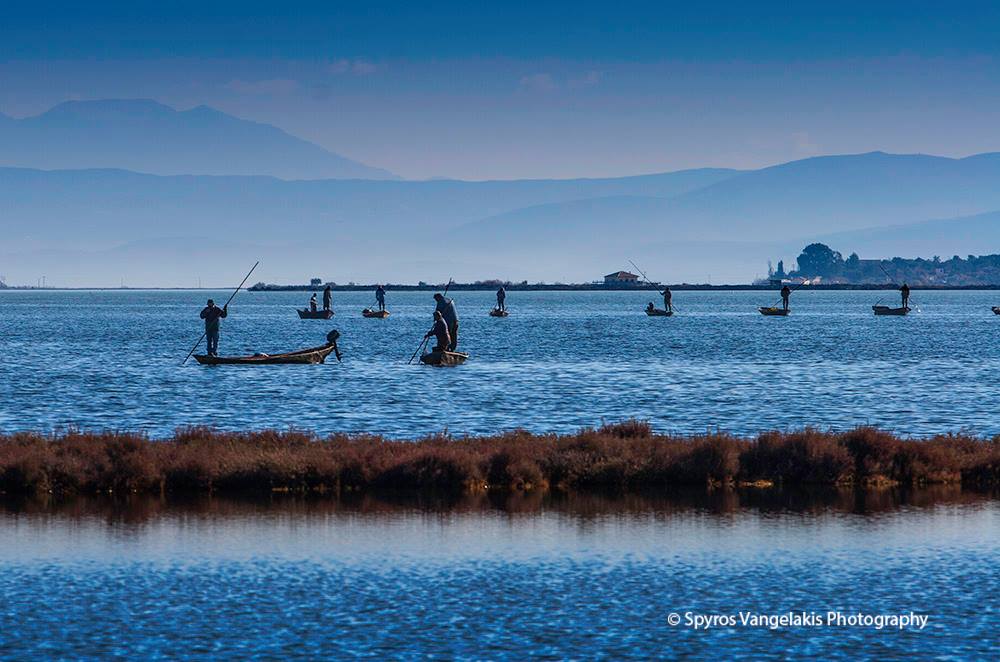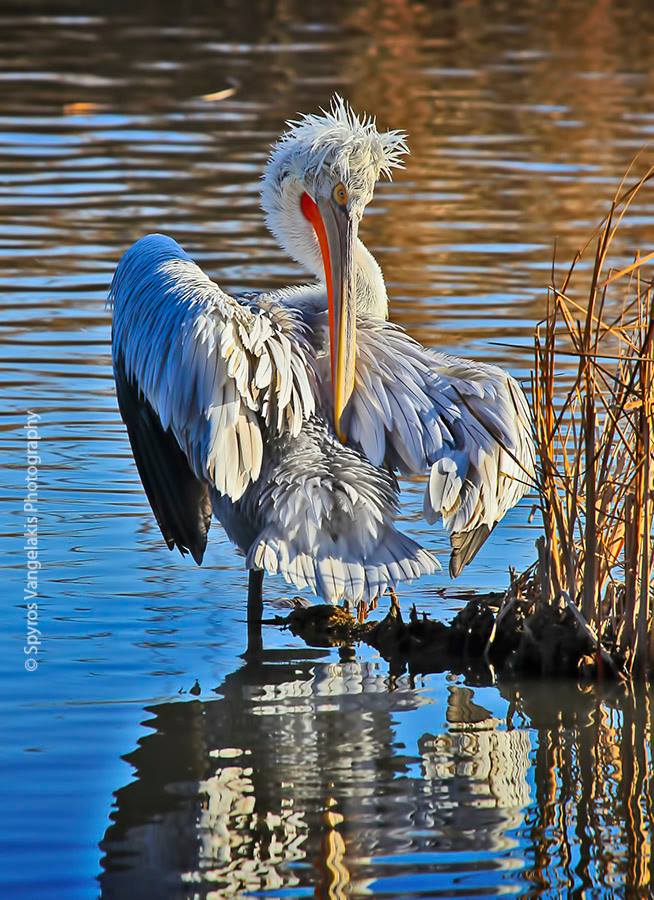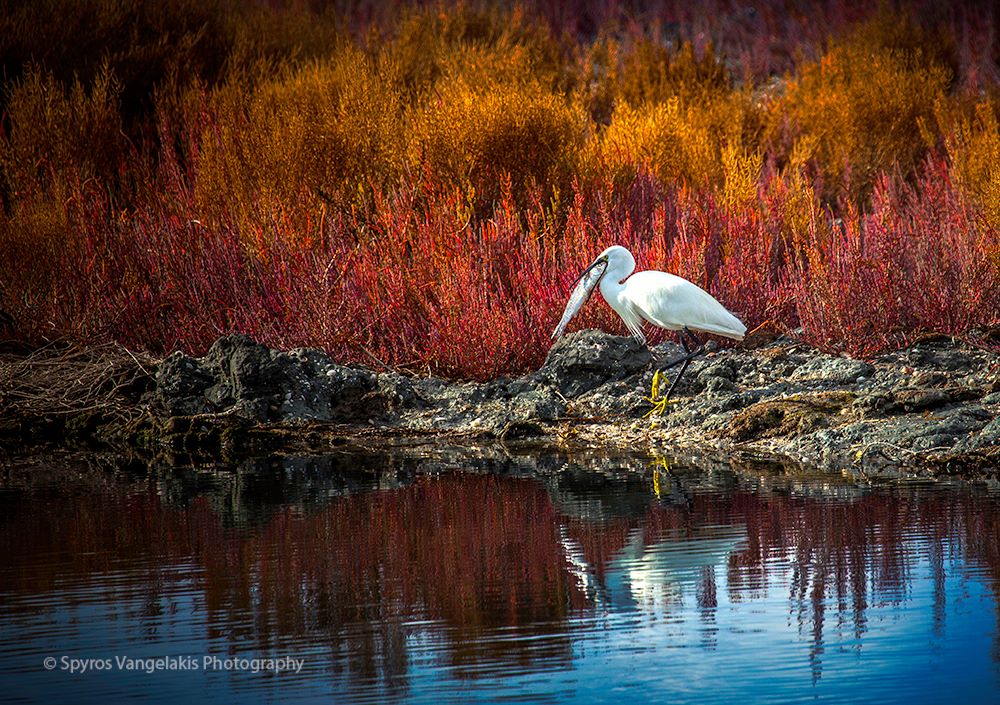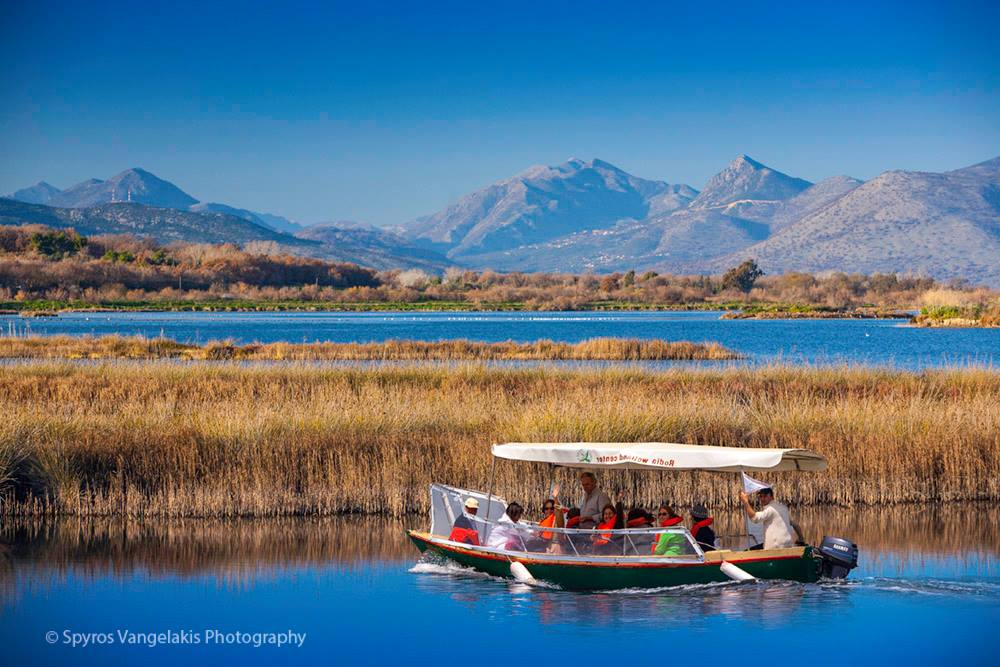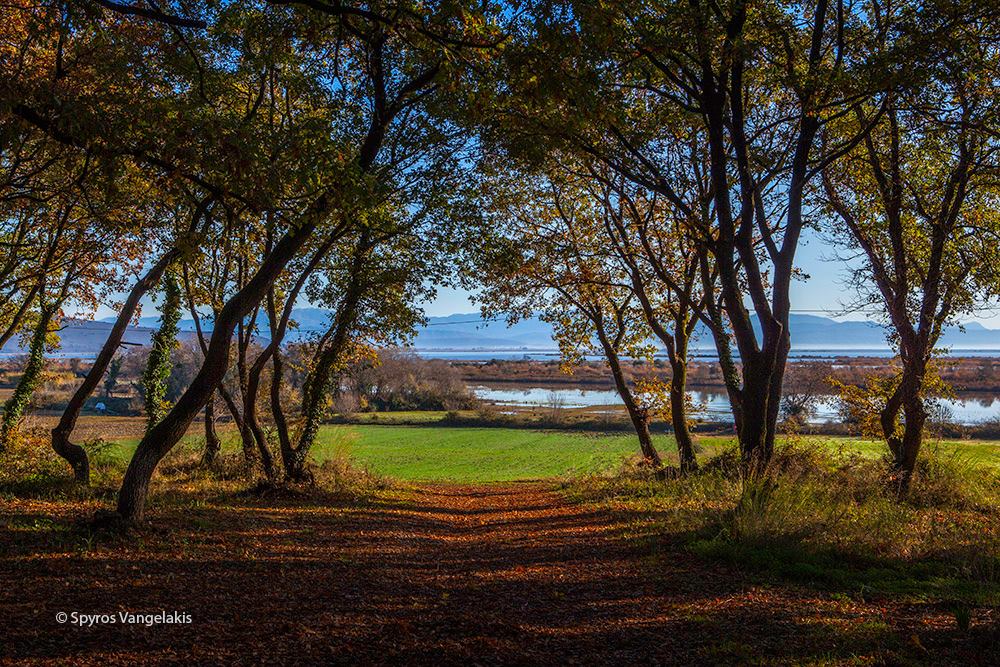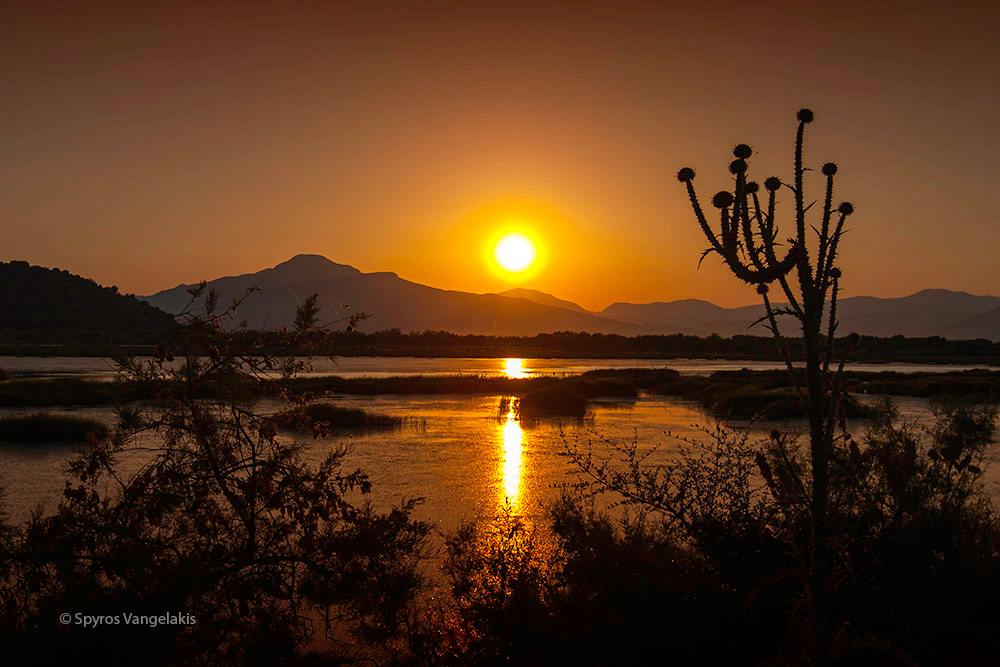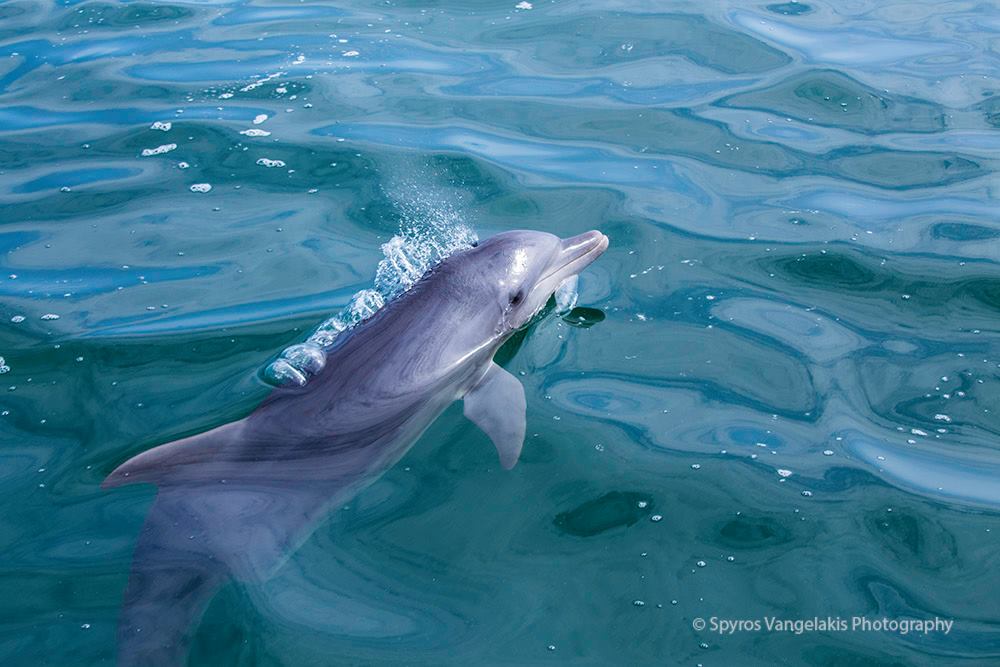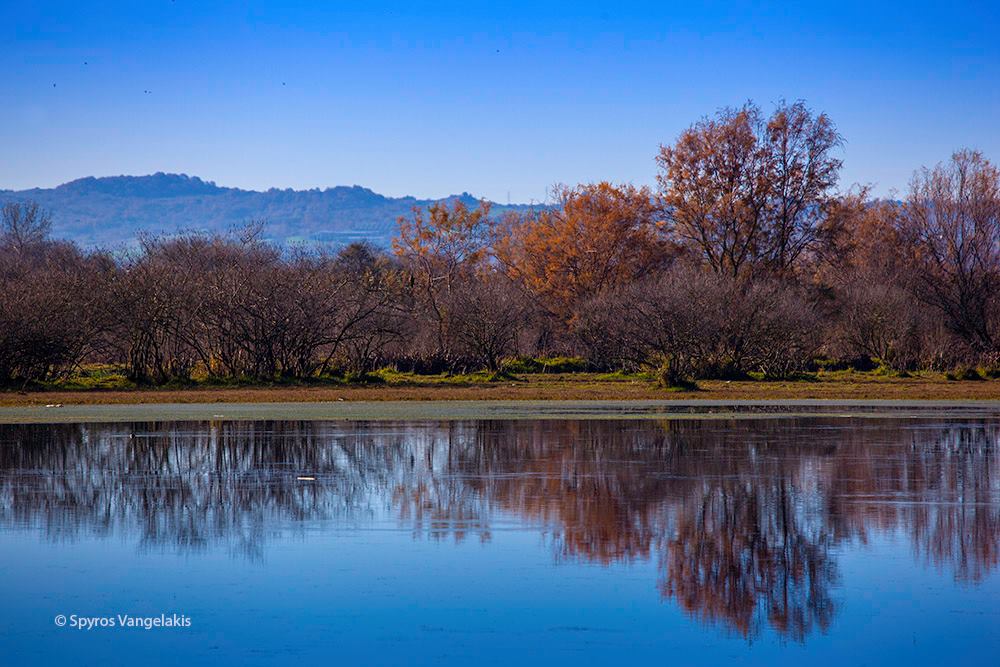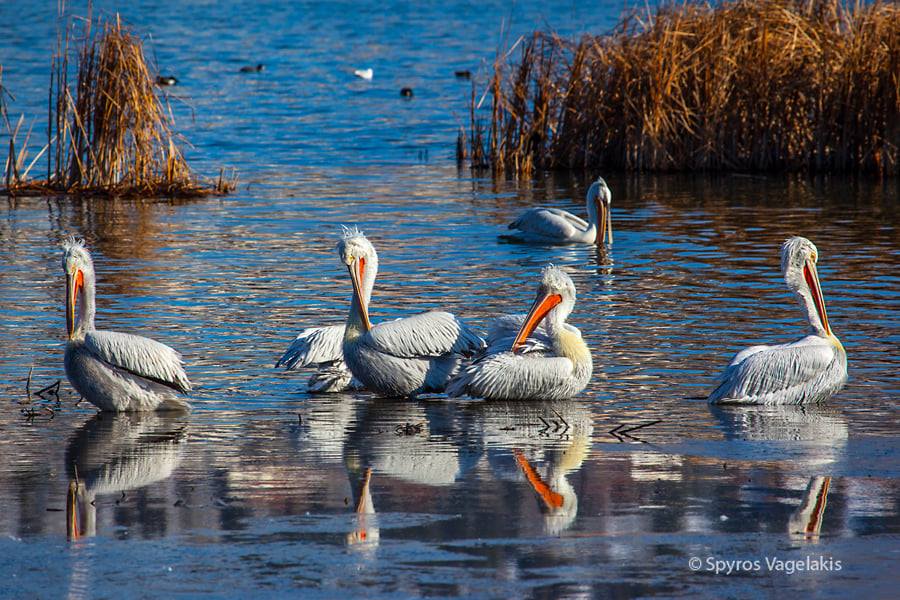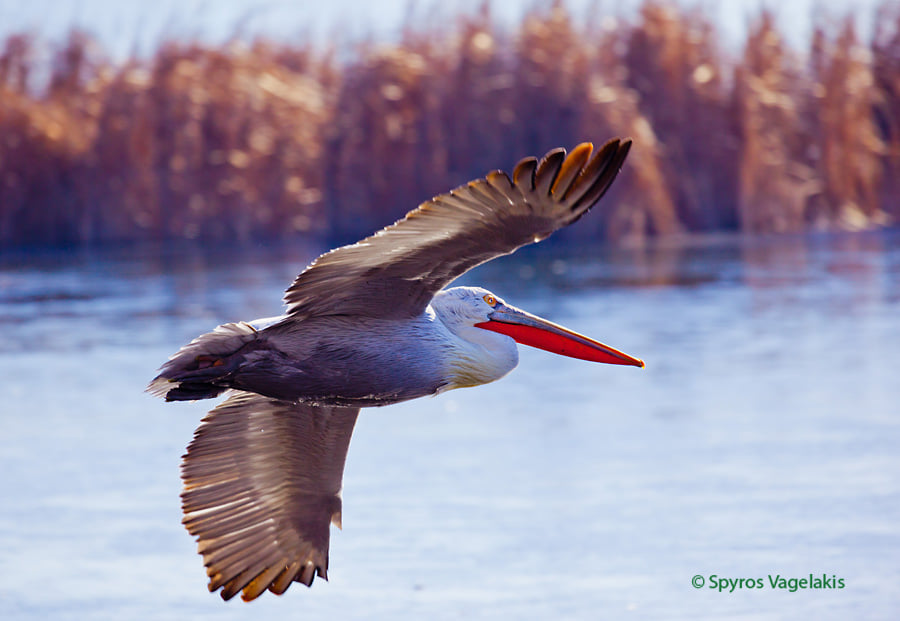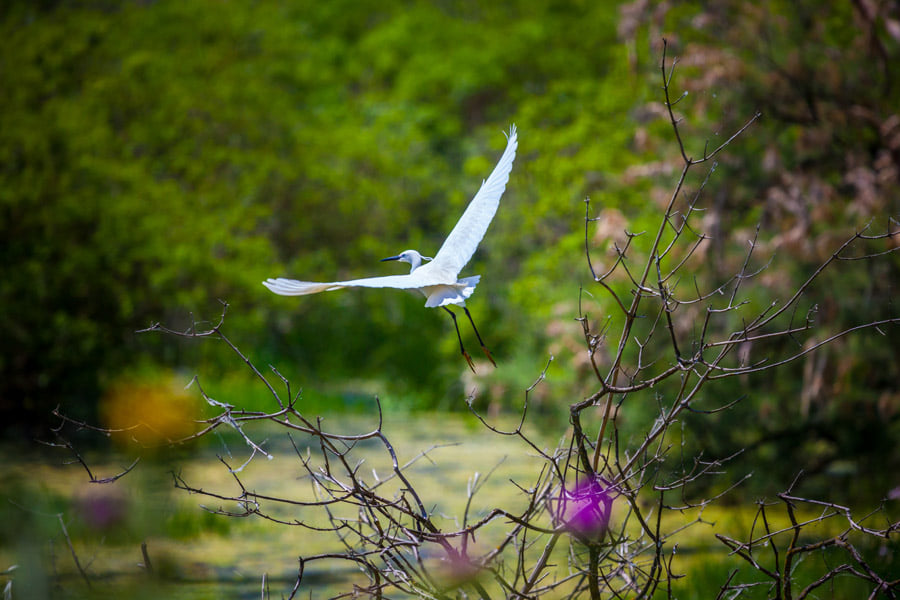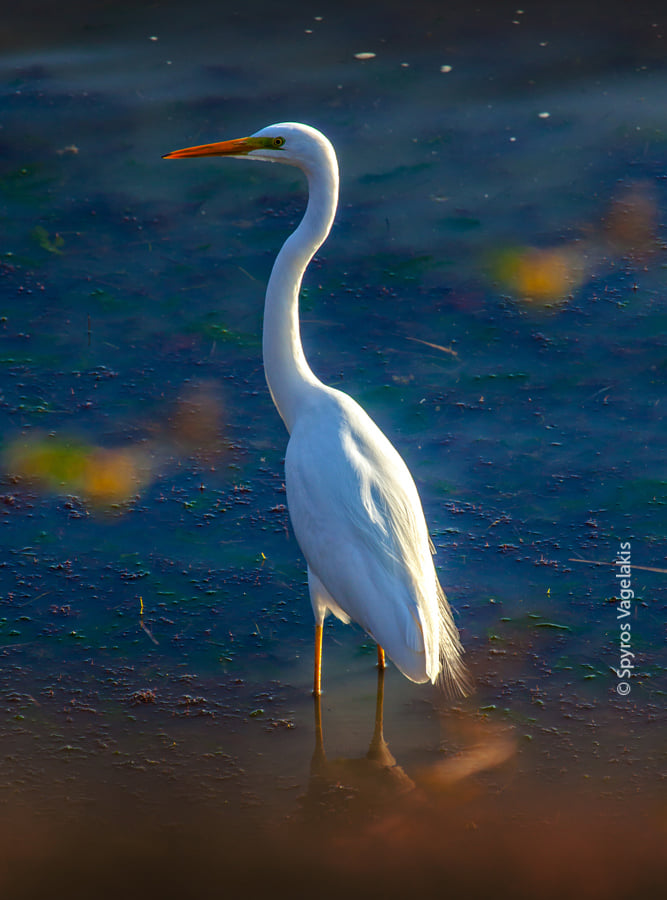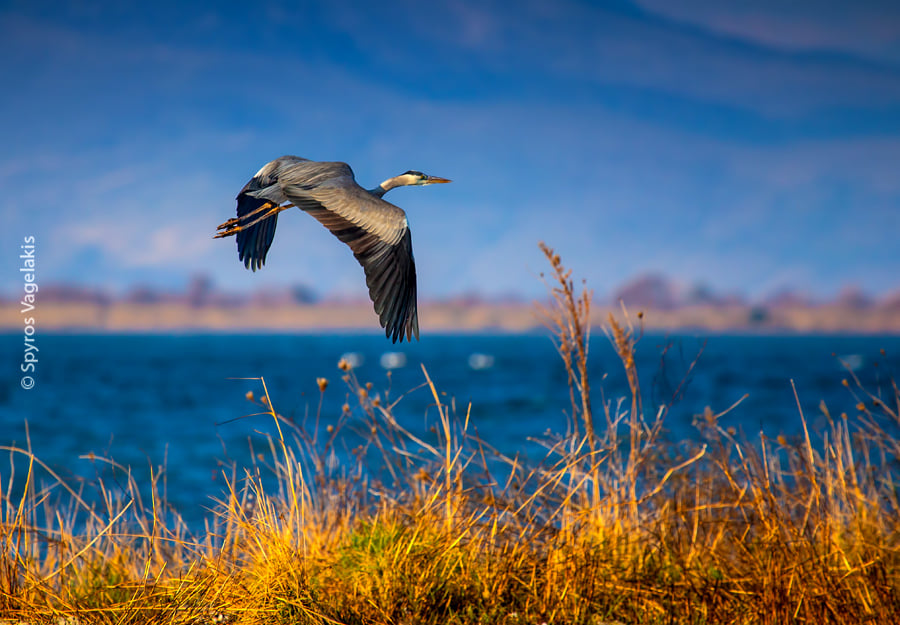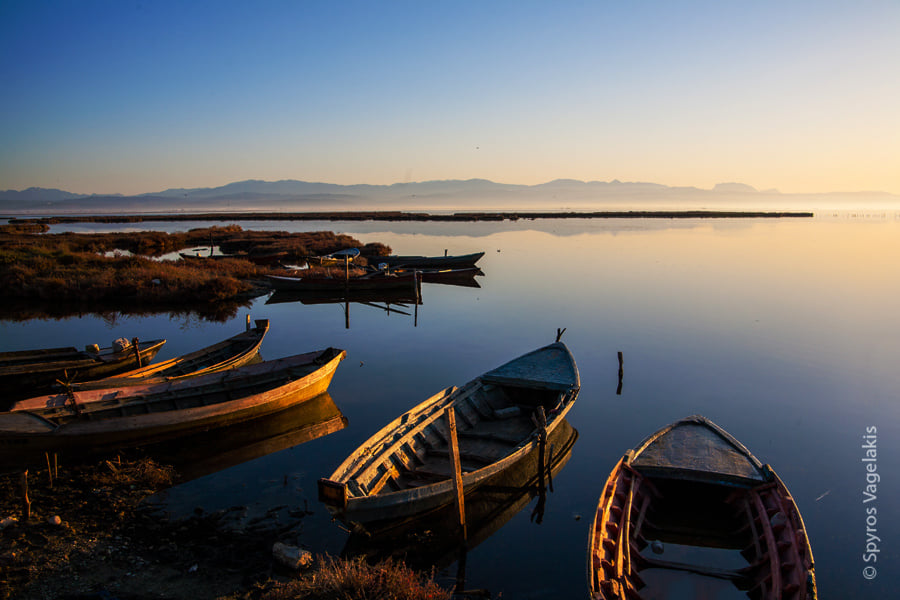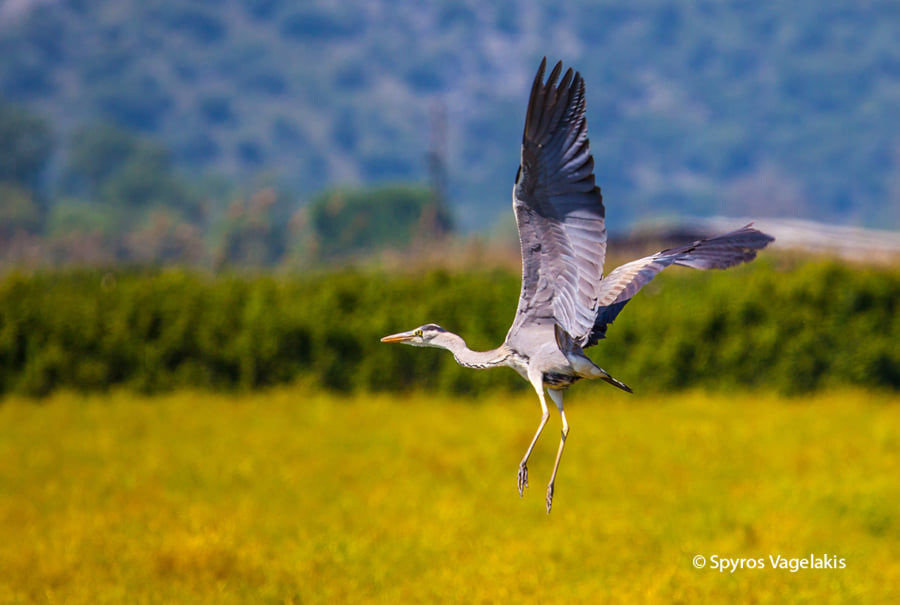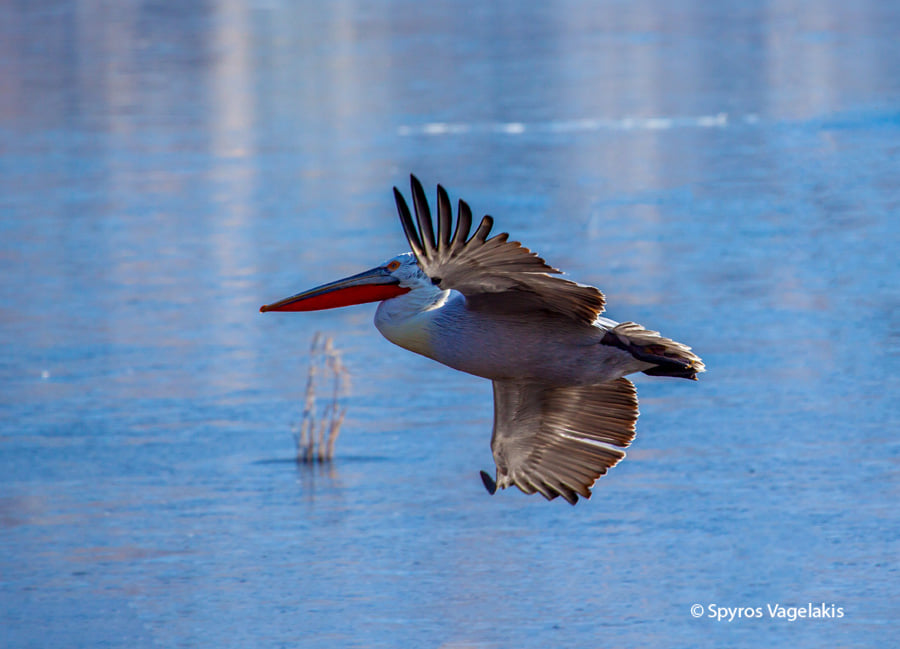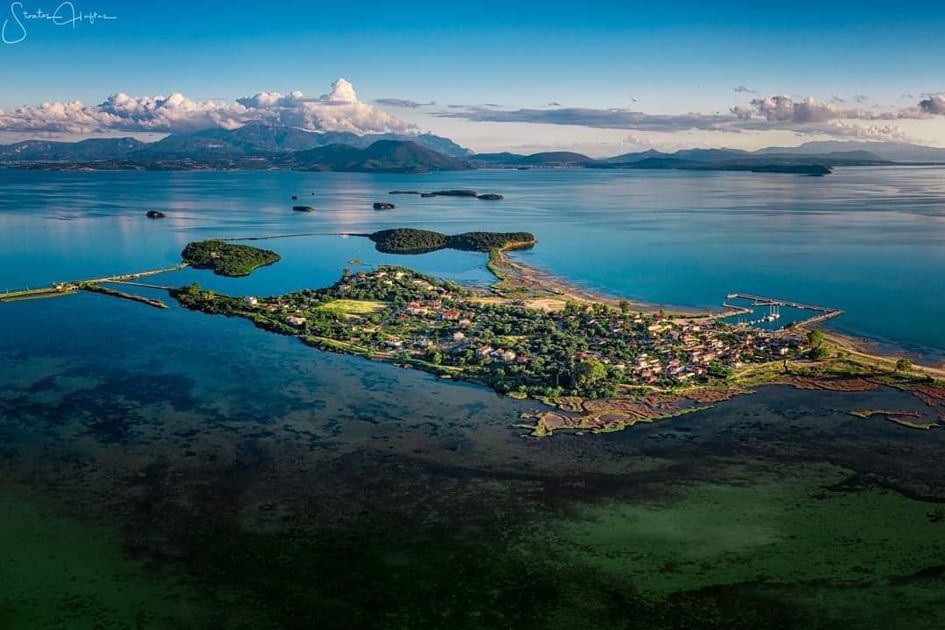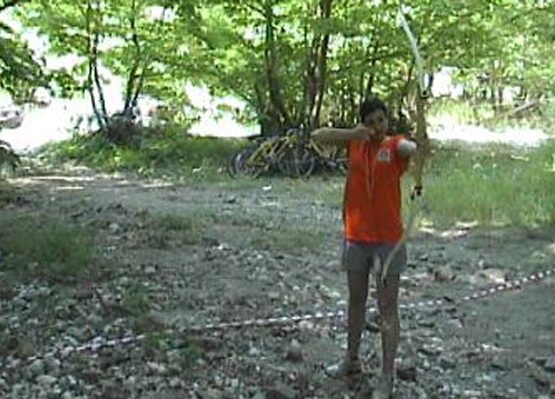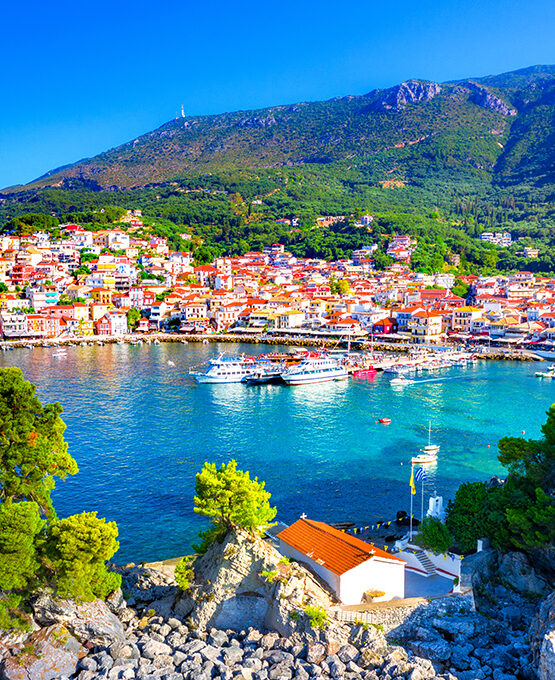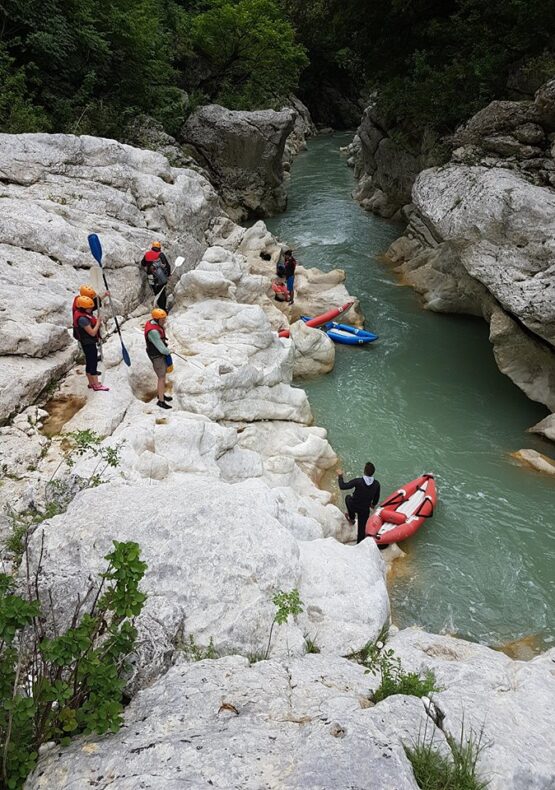The wider area of the Amvrakikos Wetlands National Park is known for its exceptional importance for avifauna in national and European level. It acts as a node for the main migration path of many bird species. From the bird species found in the area, six are globally threatened. These are:
- The Silver Pelican, an iconic bird which is the heaviest bird that can fly. It nests in the lagoons, on isolated natural islands and not on artificial platforms.
- The Etavros (Eurasian Bitern),is a cryptic species, thatlives in the reeds, with perfect camouflage. It nurtures legends and fairy tales in the area, as it is also called “Beast of the Swamp”. It’s calling is a low-pitched sound, which can be heard at great distances and resembles a ship’s horn.
- Two eagles, not permanent habitants of the area, Stiktaetos – the Greater spotted Eagle and 4. a screeching eagle – the Lesser Kravgoets Spotted Eagle.
- Different species of ducks also live here, like the Ferruginous Duck a Kind with high ecological habitat requirements and sensitive to nuisance. It’s population consists of a few birds nationwide and in Amvrakikos they are hosted and reproduce mainly in the reed of Rodia.
- Finally, Lagona, the Pygmy Cormorant, a small fish eating bird. Many mistaken it for the Cormorant, but it is smaller in size and has a “thinner” physiognomy.
Also, herons and egrets nest in the area, little grets, nightingales, pipits, Coots, coots, grebes, a huge number of ducks and many waders, all kinds of birds that the wetlands are their natural habitat.
The legal framework on which the management, the superintendence and the protection of the Amvrakiko’s National Wetlands Park , is determined by the Natura2000 Network and the Ramsar Treaty.
Itinerary
ROUTES FOR BIRD WATCHING AND WALKING (3-4 hours in the morning or in the afternoon- (not at noon because the opportunities to see birds are fewer – no jeep needed)
Some of the routes for bird watching which can be also combined with hiking are the following:
The first one in the Tsopeli lagoon, 7 km from Preveza, about 10 minutes by car. Going around the lagoon, on foot or by car, we arrive at the estuary of Louros river having the opportunity to observe many bird species, including the beautiful Flamingos that take their pink color by eating small shrimps they find at the bottom of the lagoon. Silver pelicans wander around, ducks emerge from the islets and lefkochikniades and Kalamokanades having the role of guardians, begin to notify the rest of the species about our arrival.
Also visitors can see how the ibaria, operate and how the traditional fishing , the same from the ancient times, is done, a technique that is connected to ancient Nikopolis.
Moreover, nearby (10 km) in the village of Louros, at the riparian forest of Saint Barnabas one of the few remaining in Greece, the visitor can take a walk and enjoy nature as the area has been formed into a promenade and recreation route. The phytocommunities of Fraxinus ormus (Frax), Populus alba (Poplars), Salix alba (Willows), Sambucus nigra (Elder), offer their shade and coolness. In the forest there is the homonymous church of Saint Varnava, unique in Greece, 3km east of the town of Louros, between the river Louros and its tributary Xeropotamos), which is locatedamong plane trees (Platanus orientalis). A whole world inside this forest, is waiting for us to explore it.
Between the towering trees shy Magpies, will emerge and will start their conversation and the woodpeckers will undauntedly continue tapping the logs in order to find food. Many birds will fly from branch to branch not having anyone in this forest to disturb them. And on the ground there is always somewhere a fox, a ferret and of course (harmless to humans) water snakes.
Continuing the birdwatching, we reach the Hill of Saint Aikaterini and the Kalamiona’s Habitat Rhodias (distance 10 km from Louros/Ag. Barnavas), next to village of Strogyli. A visit at the top of the hill, at the village of Strongyli, is a unique experience, both for scientists as well as for nature lovers. Overlooking the Delta of Louros river stretches the largest sweet marsh (reed) of Greece, with an area of approximately 28 sq. km. and covered by pure reeds (with the cane species of Phragmites australis). Rich aquatic vegetation, consisting mainly of reeds, water lilies, sedges and water lilies, alternates with open water surfaces and small enclosed brackish lakes, which further south are followed by salt marshes. Biodiversity in this area is particularly large. On the northern and western border of the large swamp flows Louros river. This zone is a real paradise for birds and especially for the seven species of herons that feed here and some nests there also. So in about the center of the swamp there is the largest heron colony in Greece, with species such as Lefkotsiknias, Kryptotsiknias, Chalkokotes, Lagones, Egrets.
Image Gallery
Important Information
Price Includes
- The ticket for the bird watching
Price Excludes
- Transfer to Preveza

